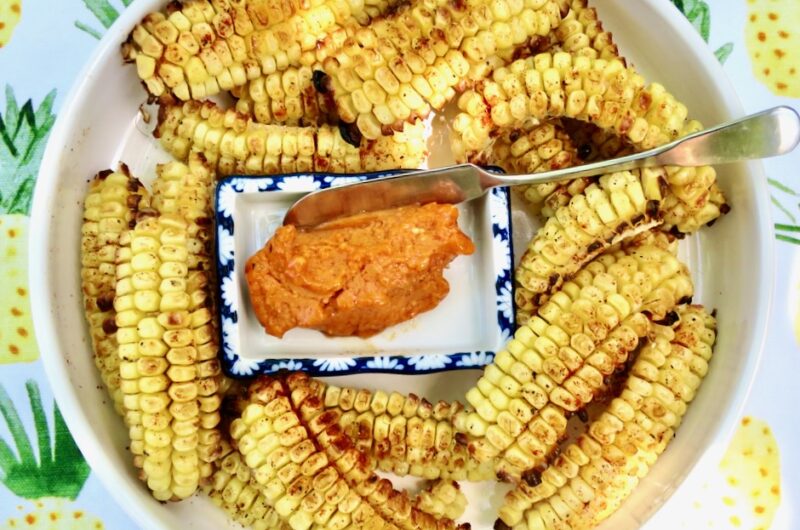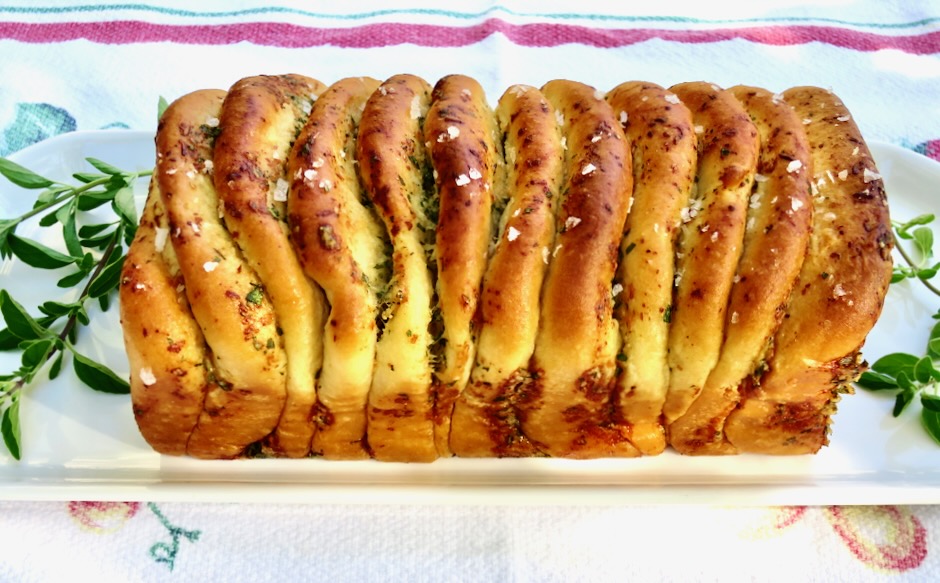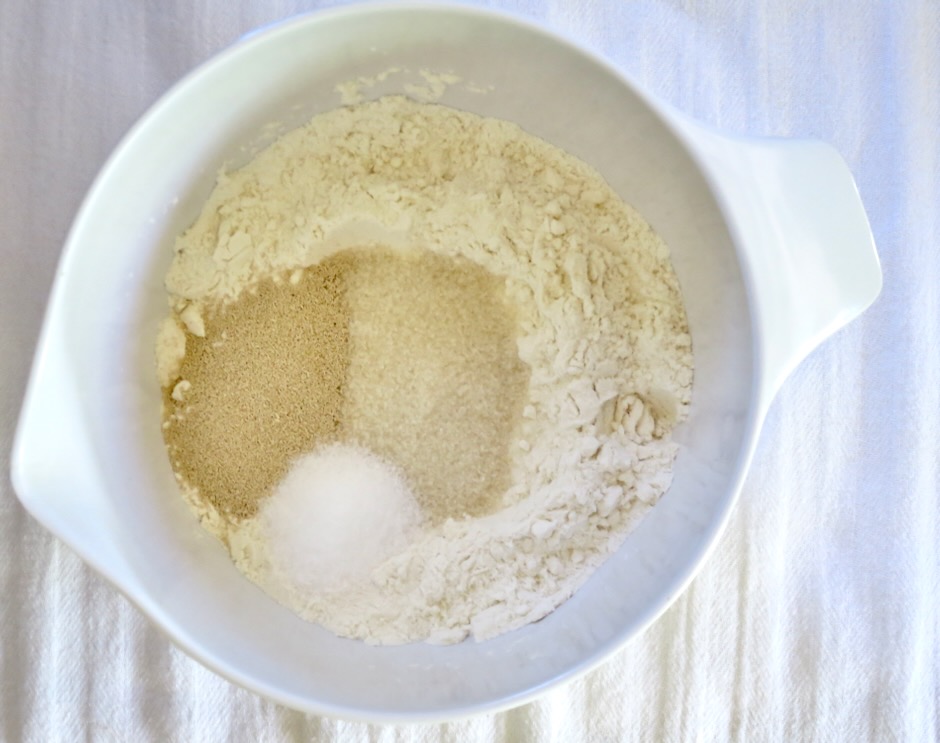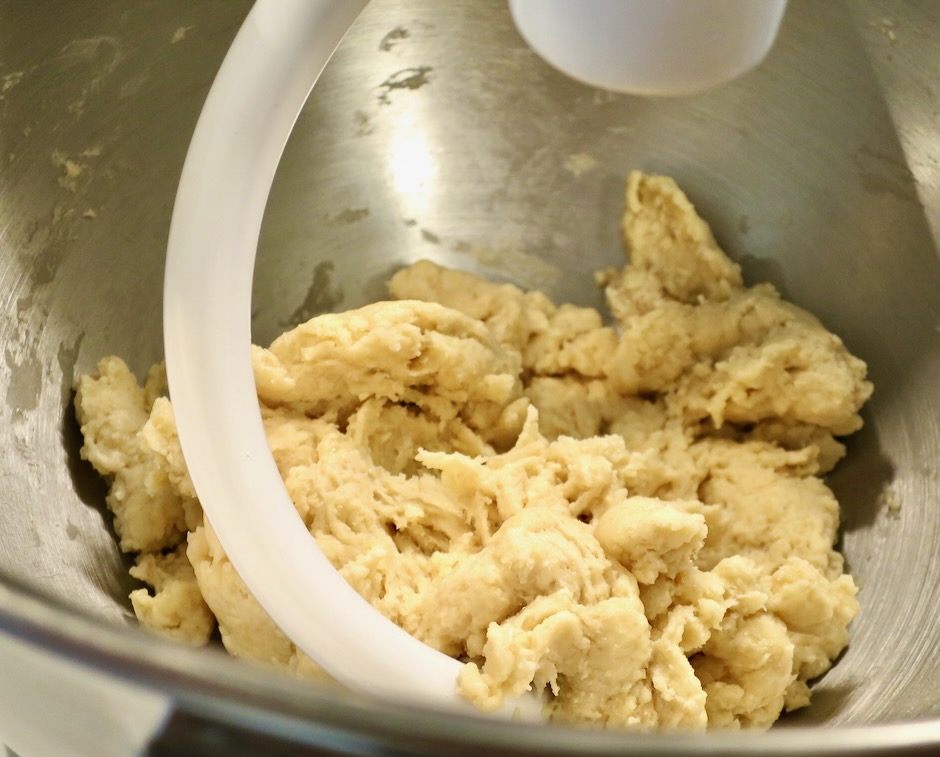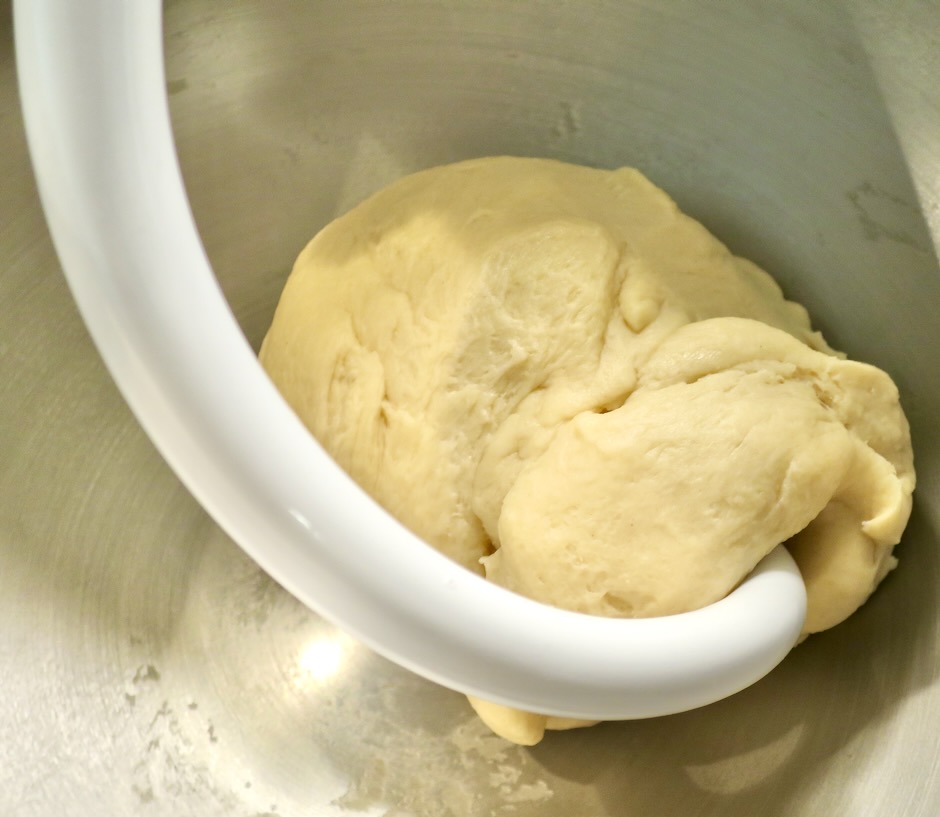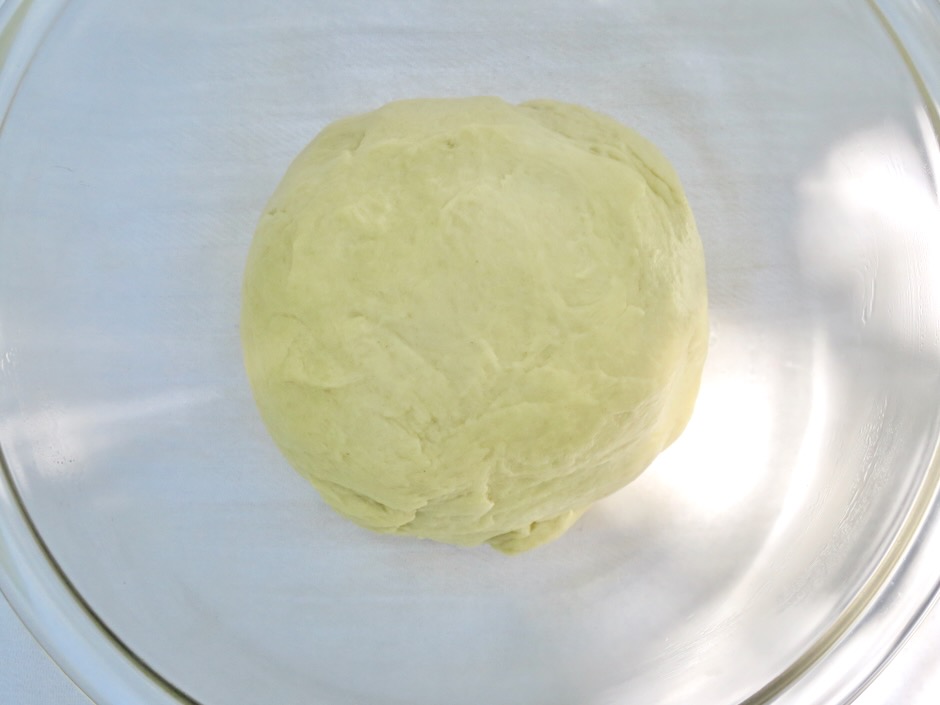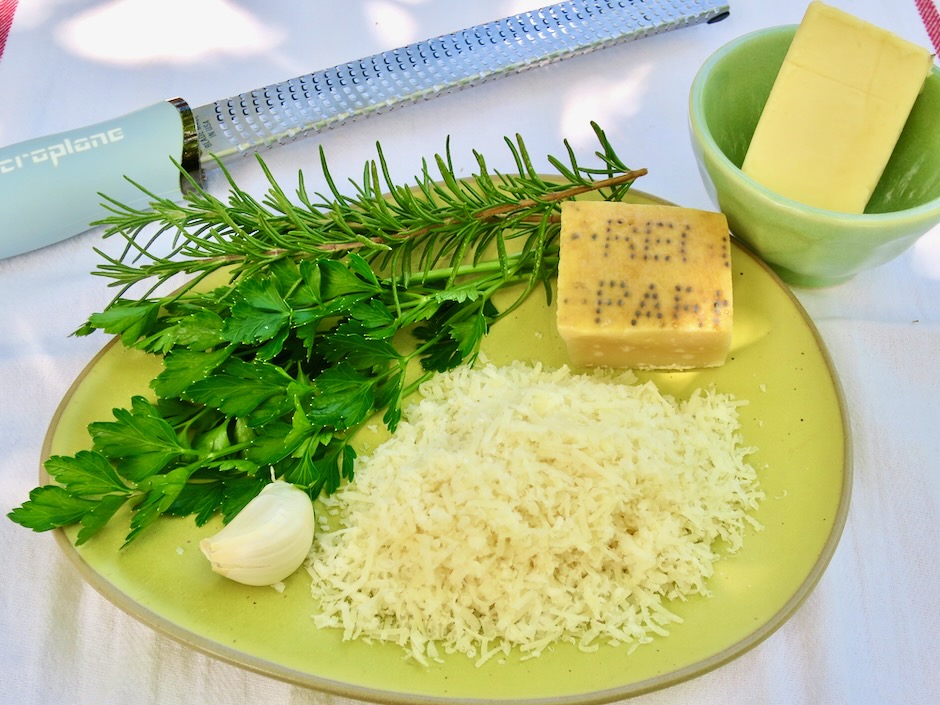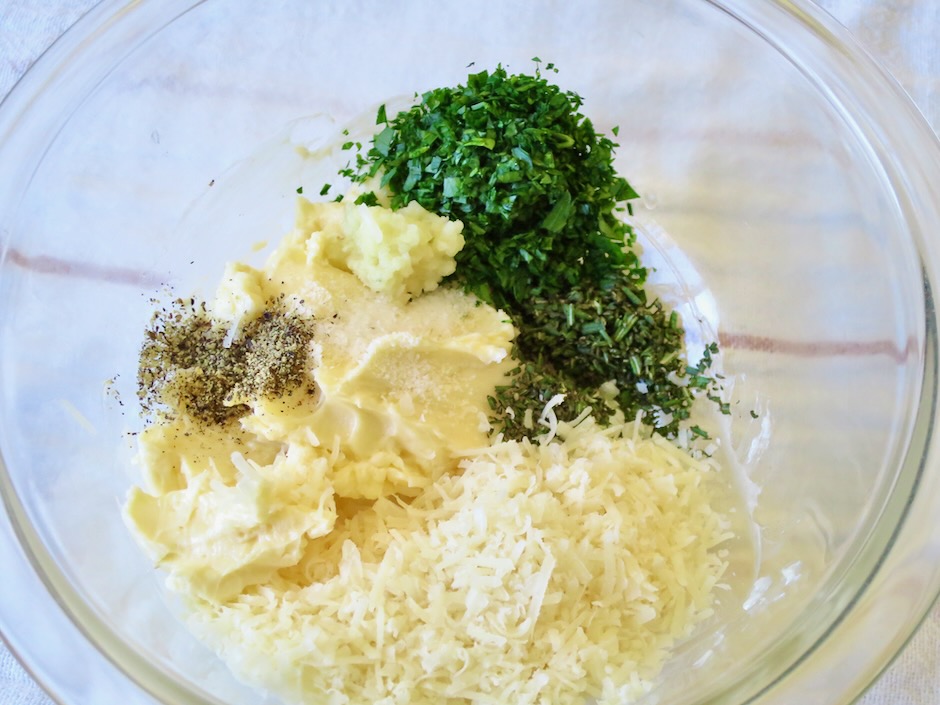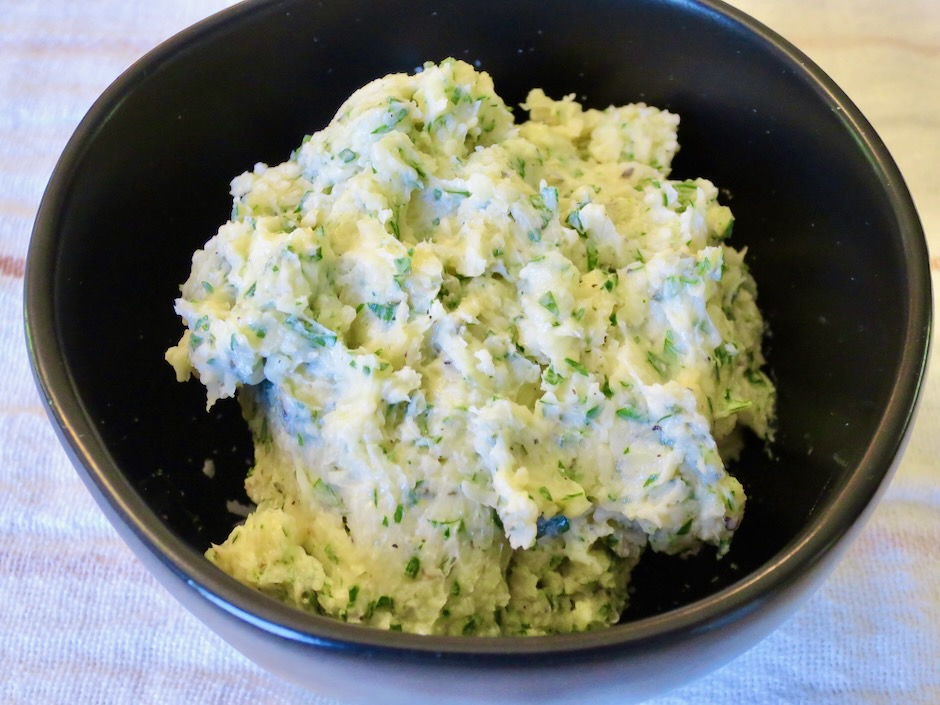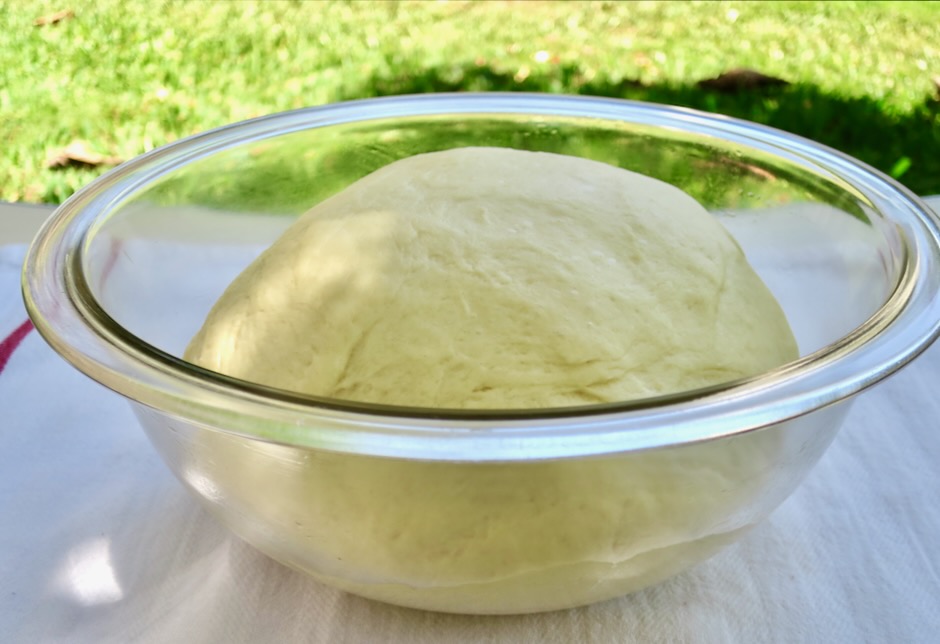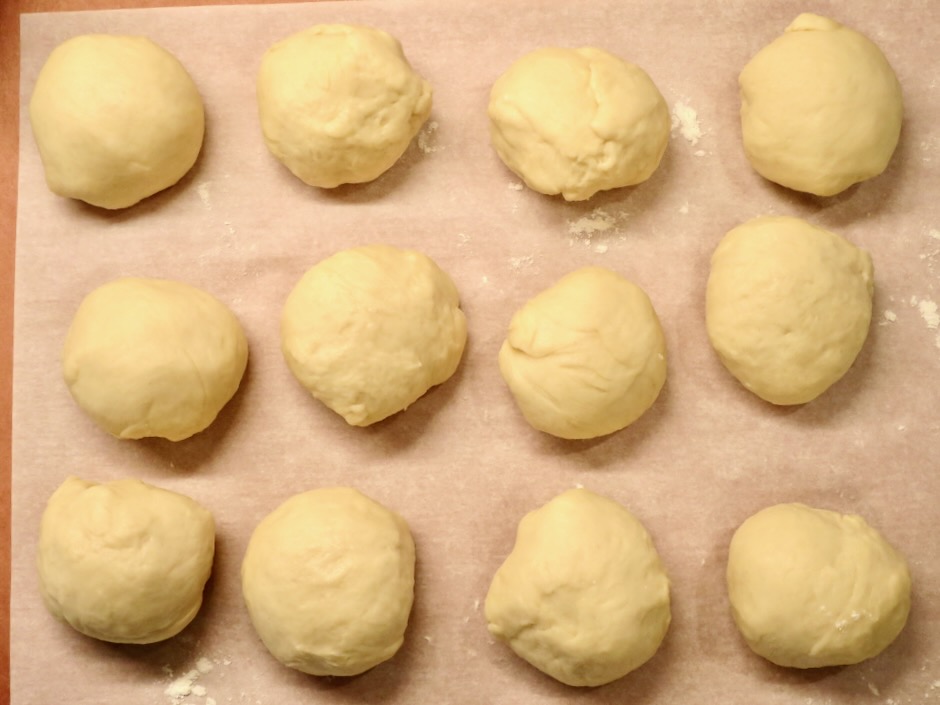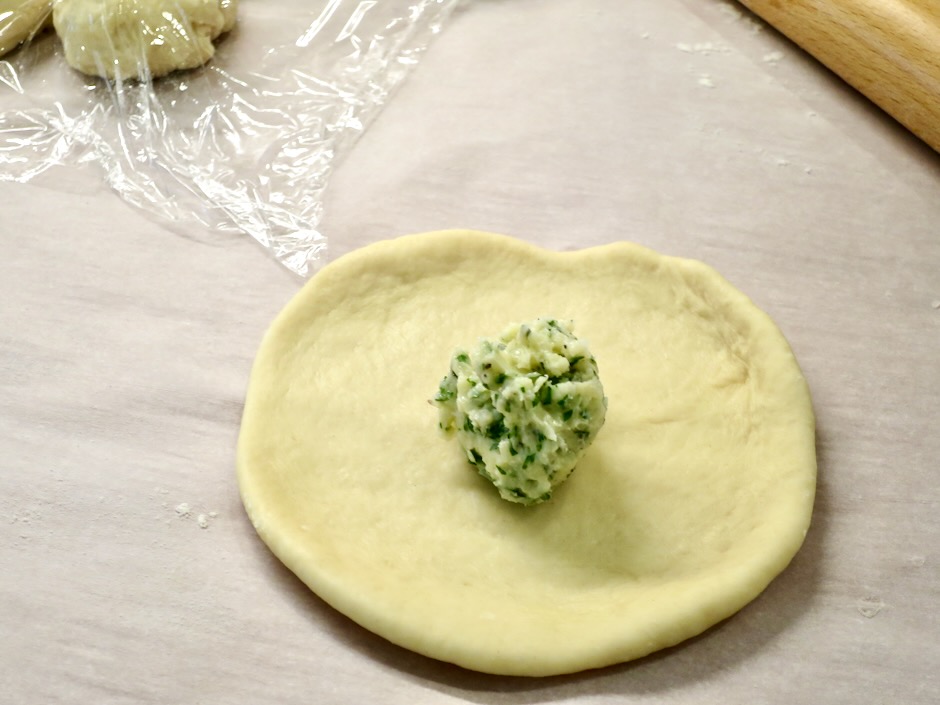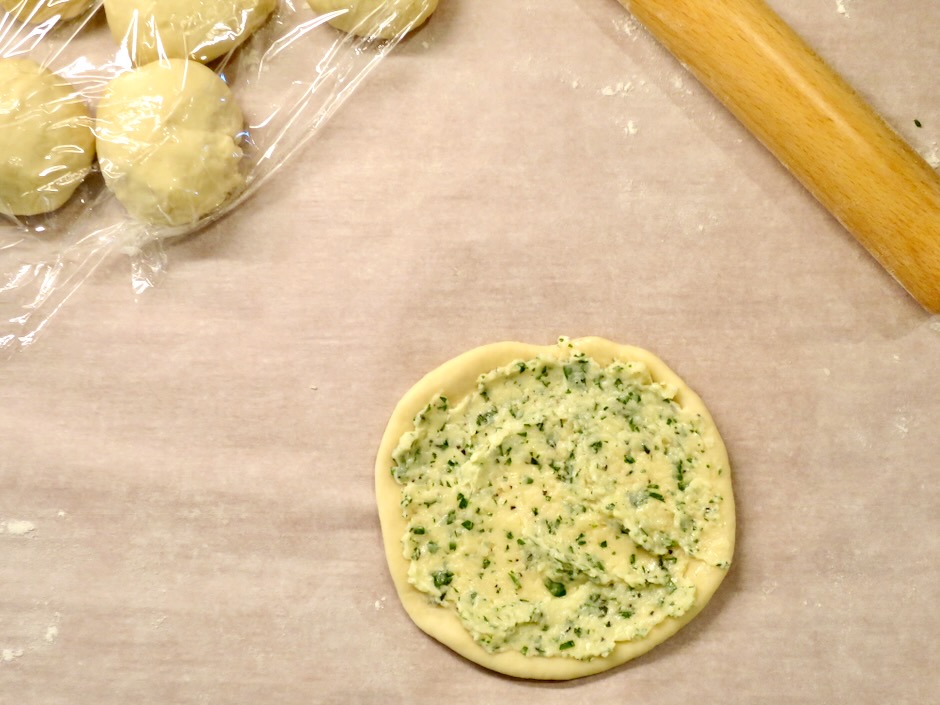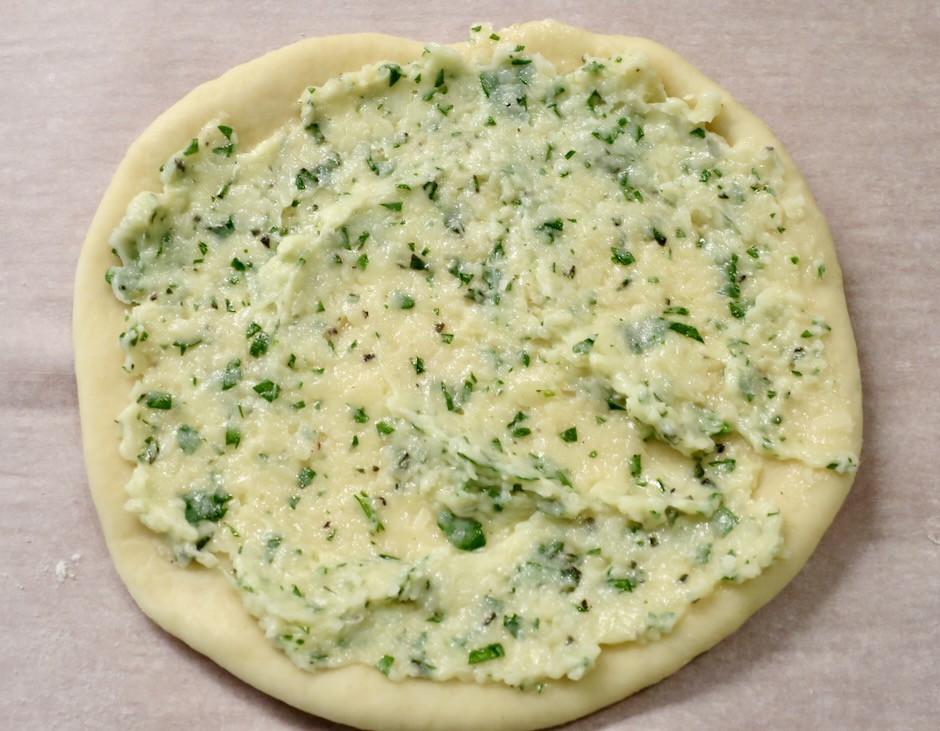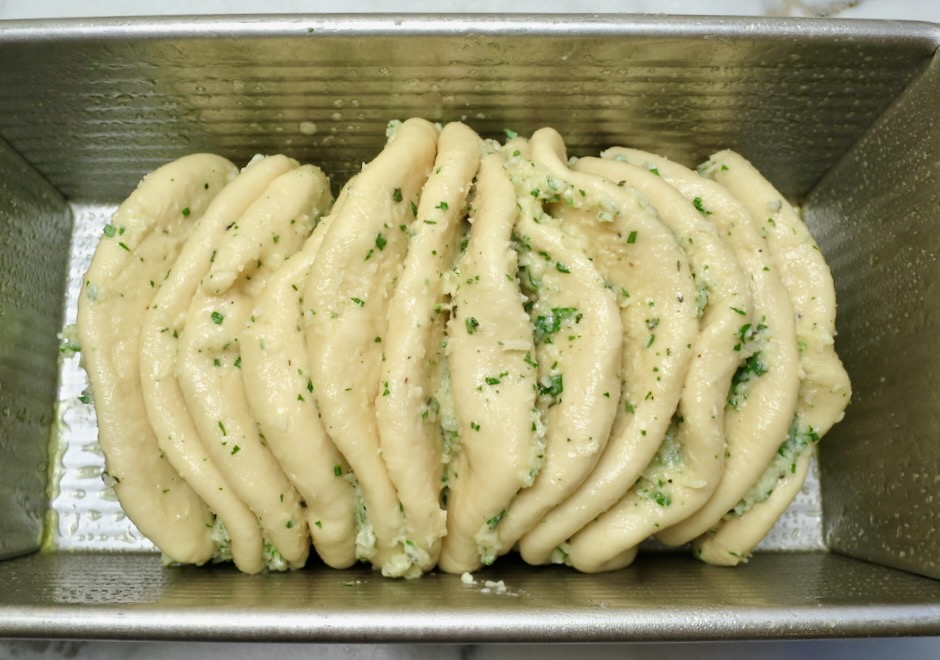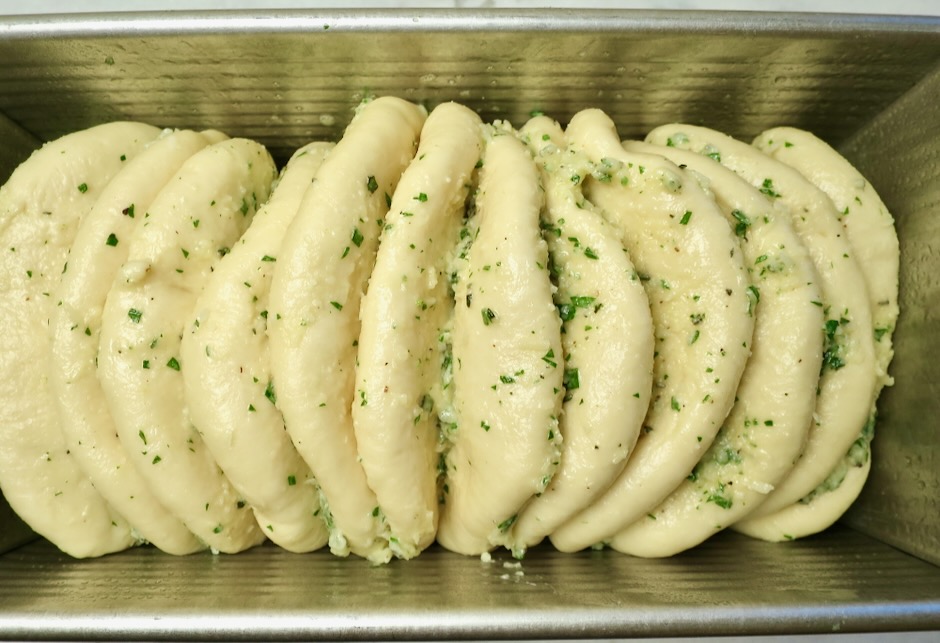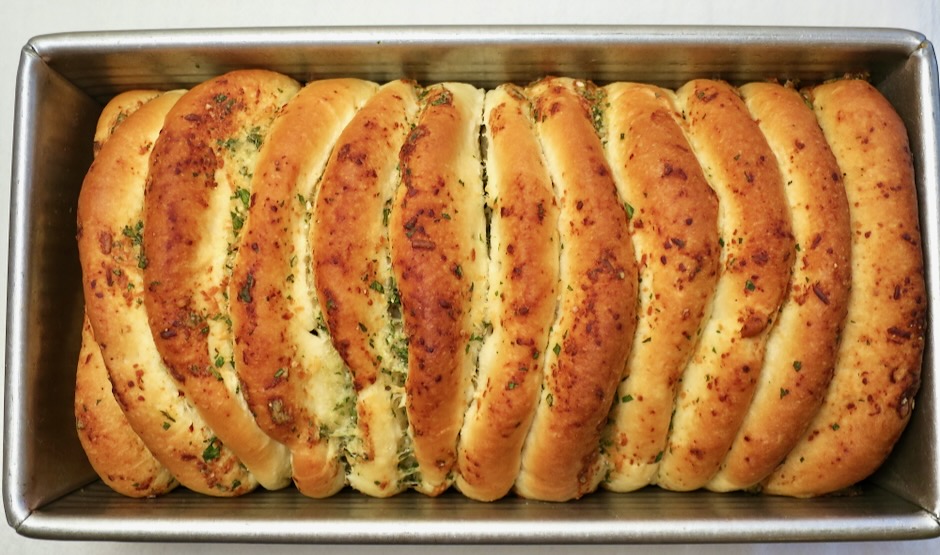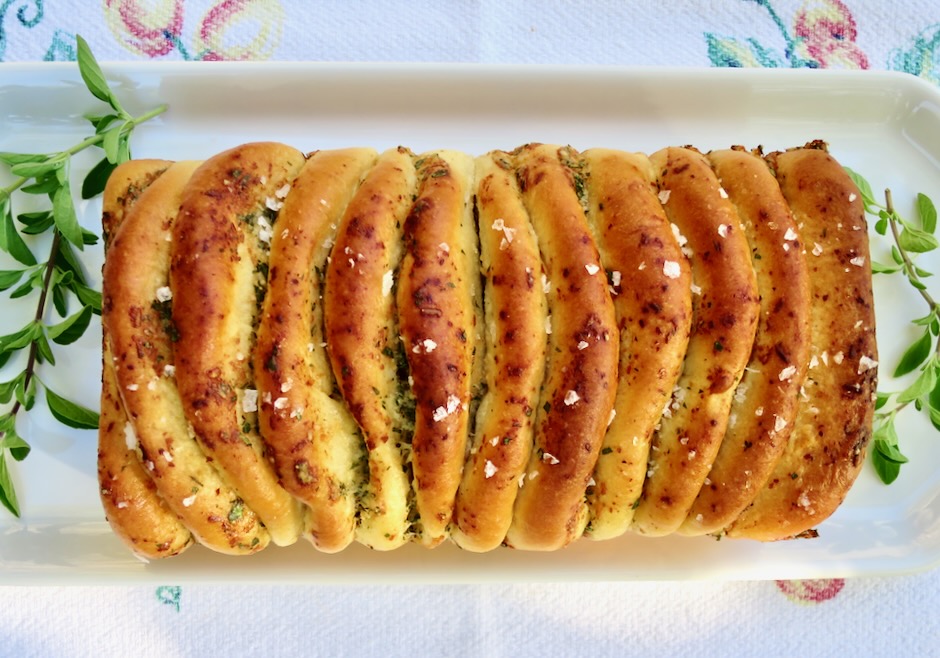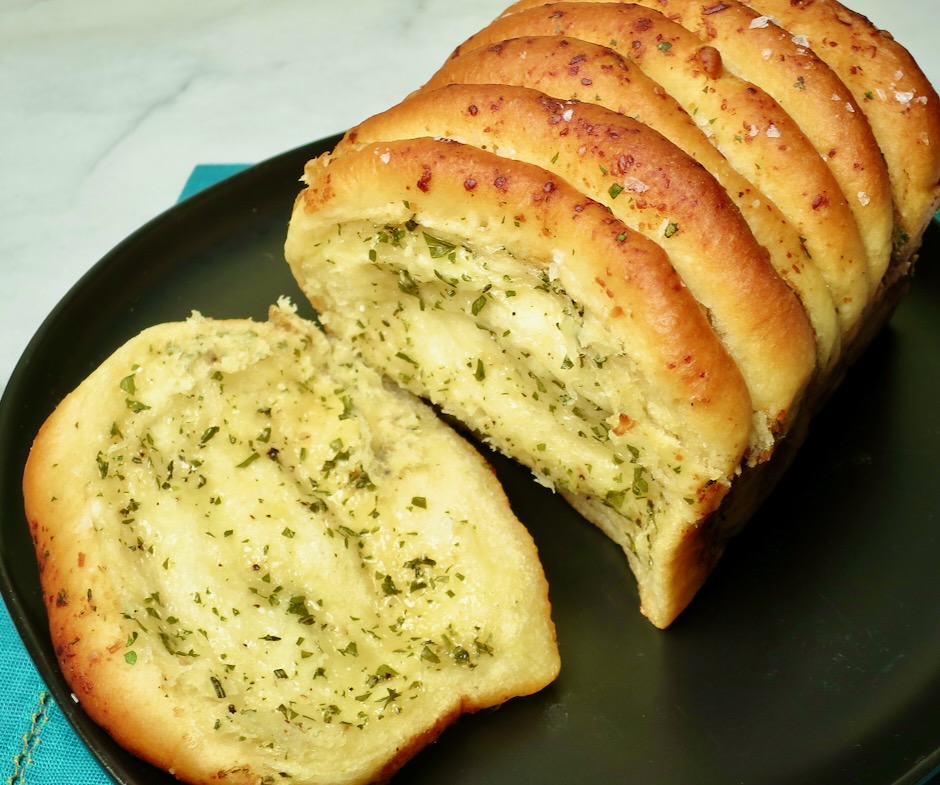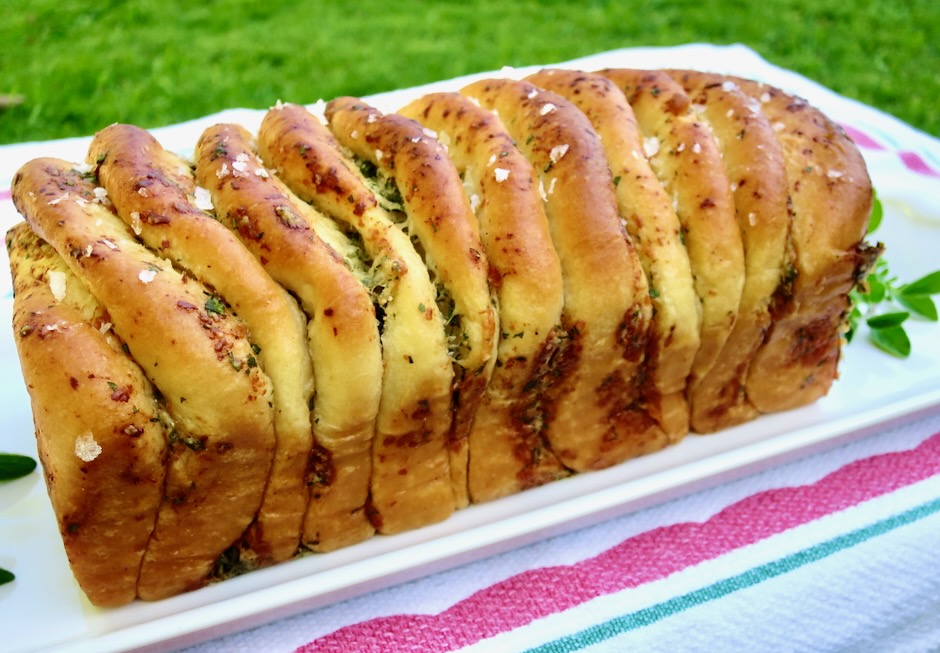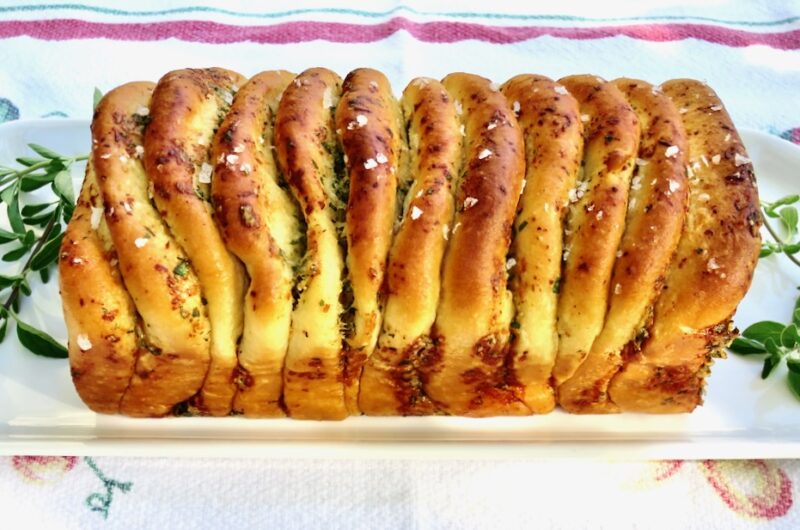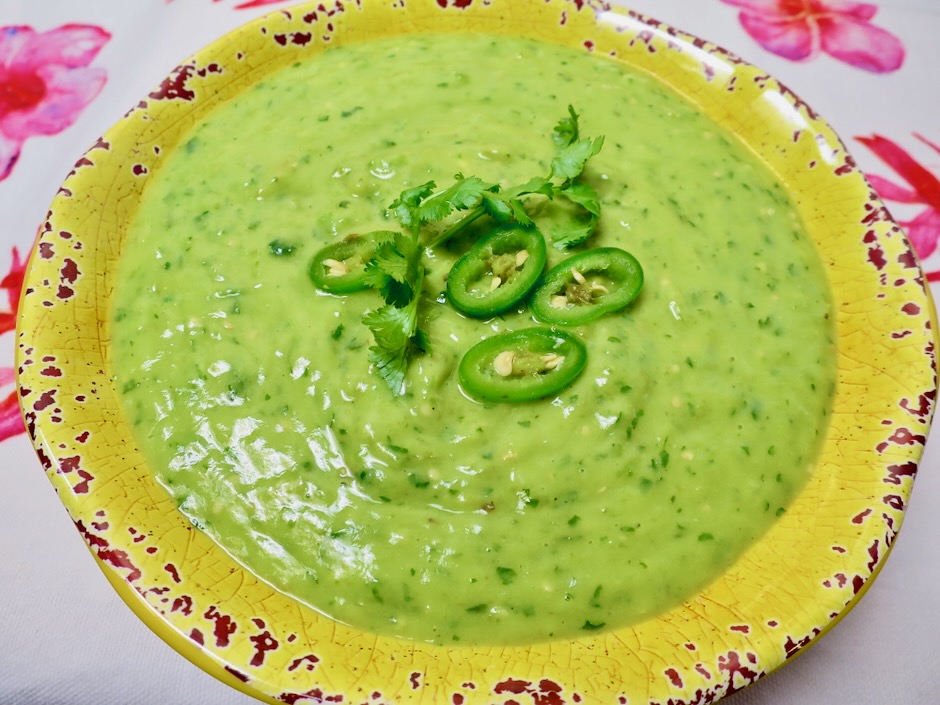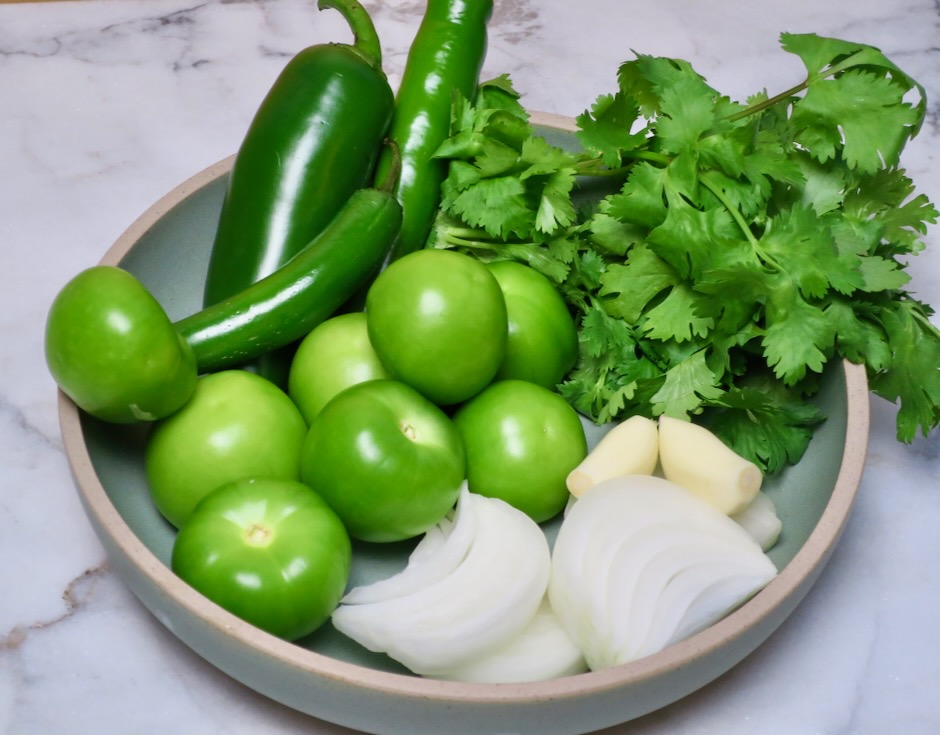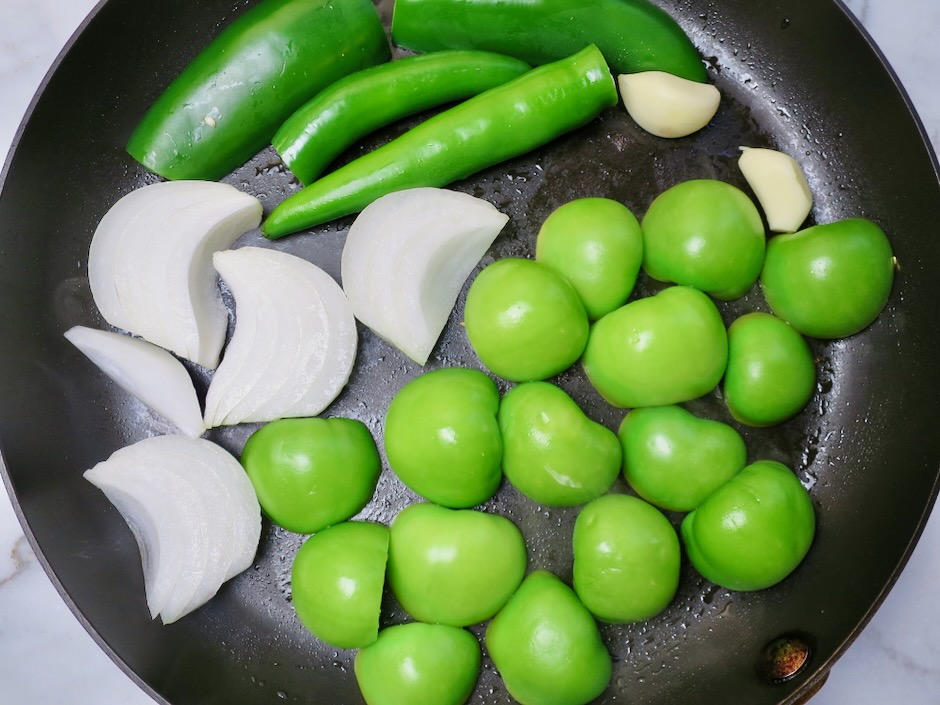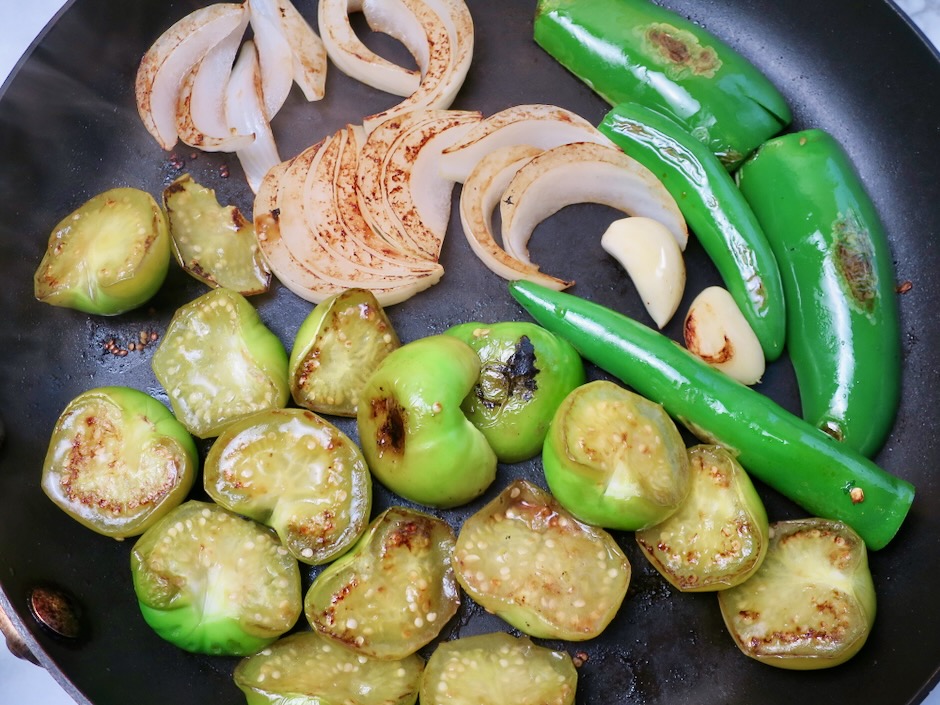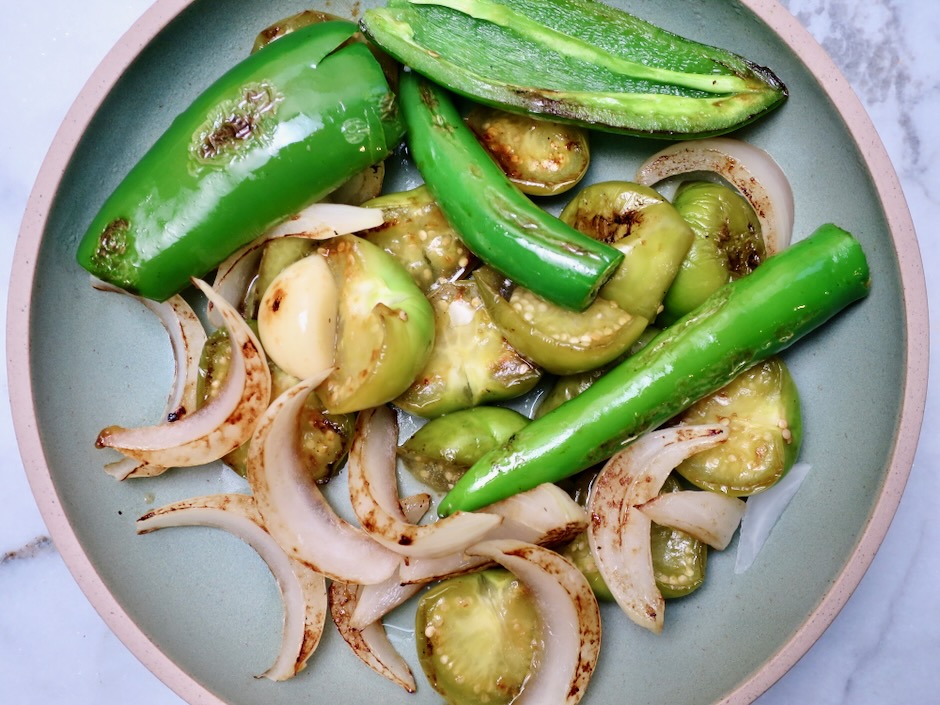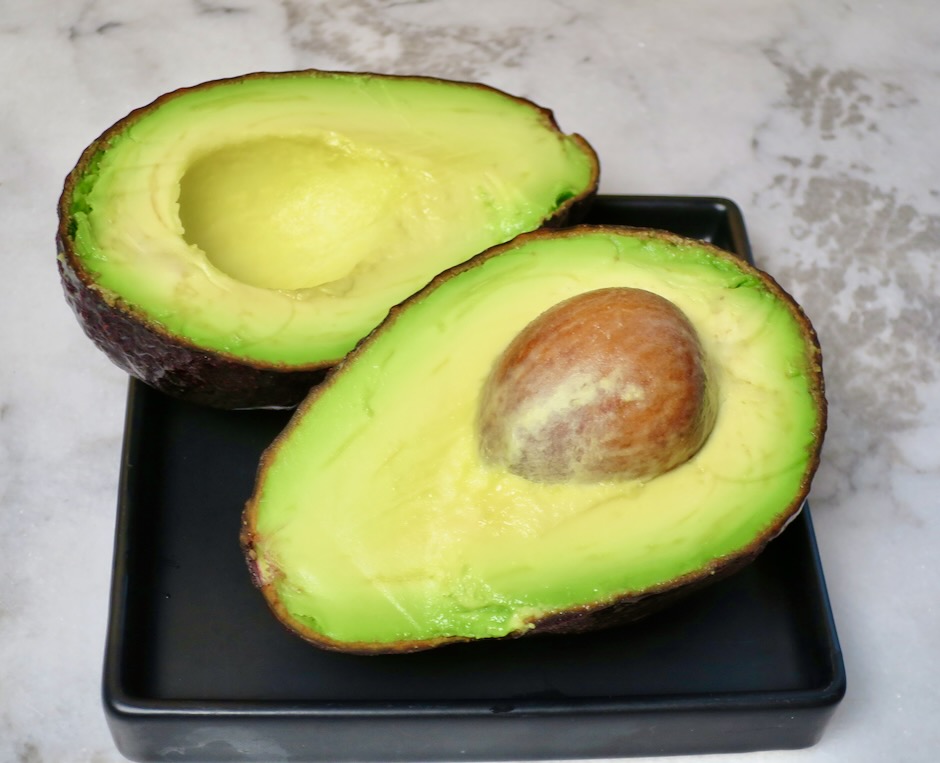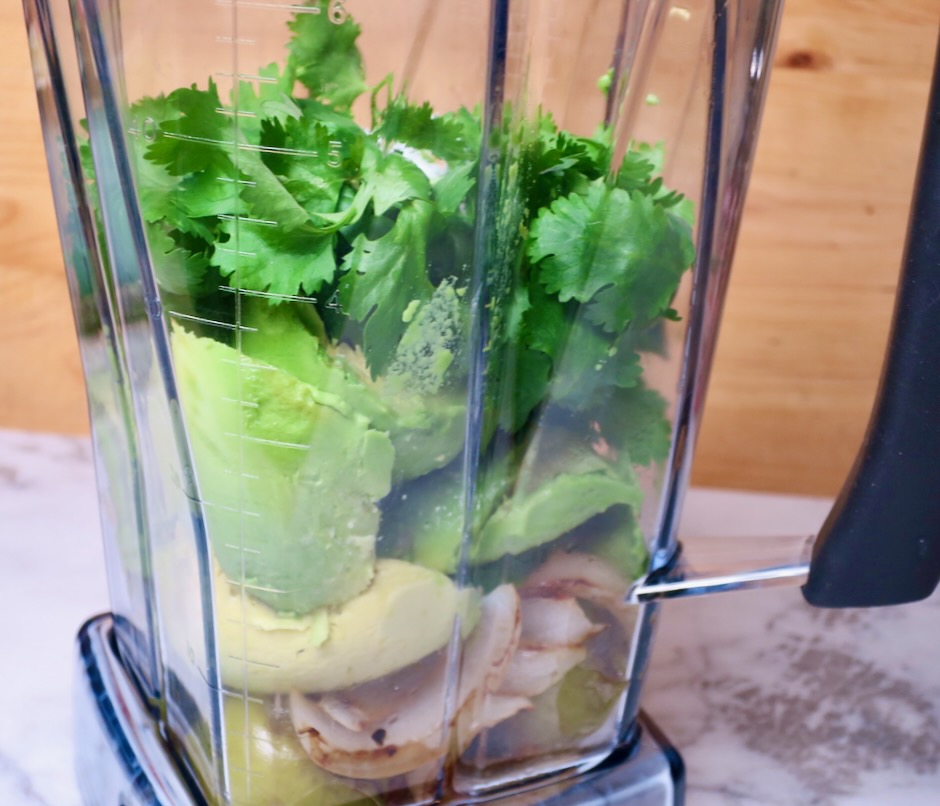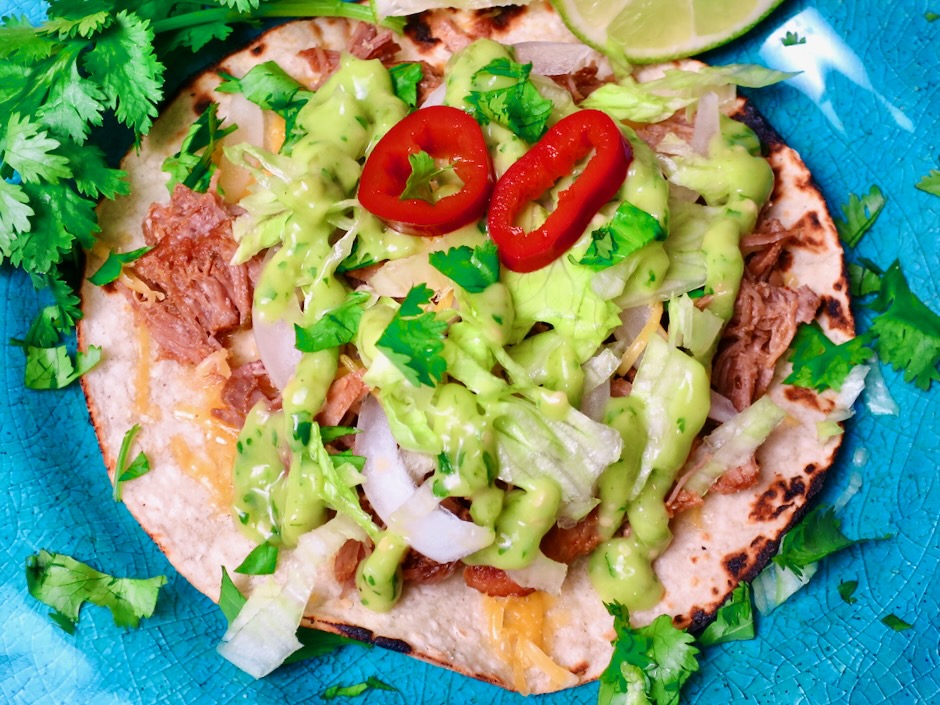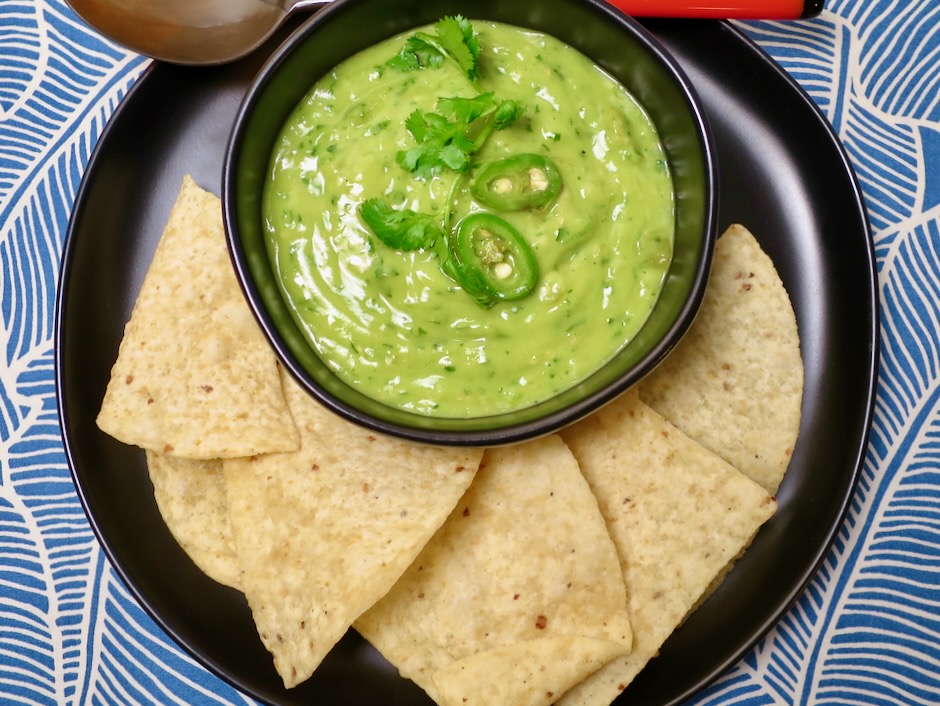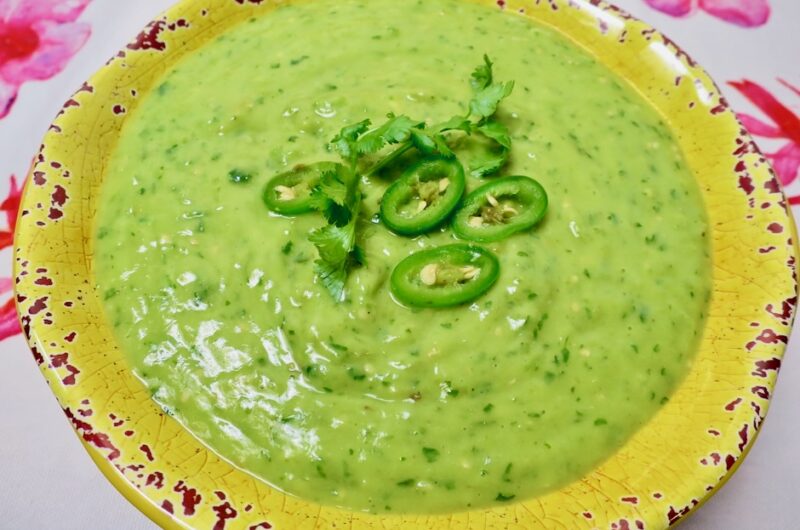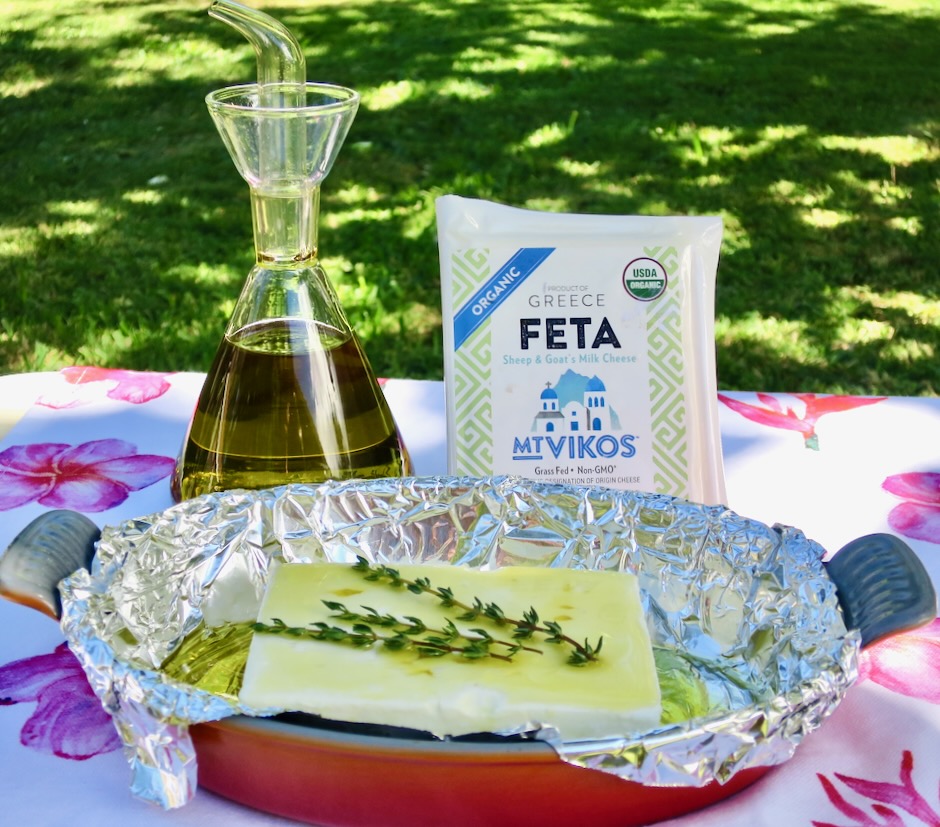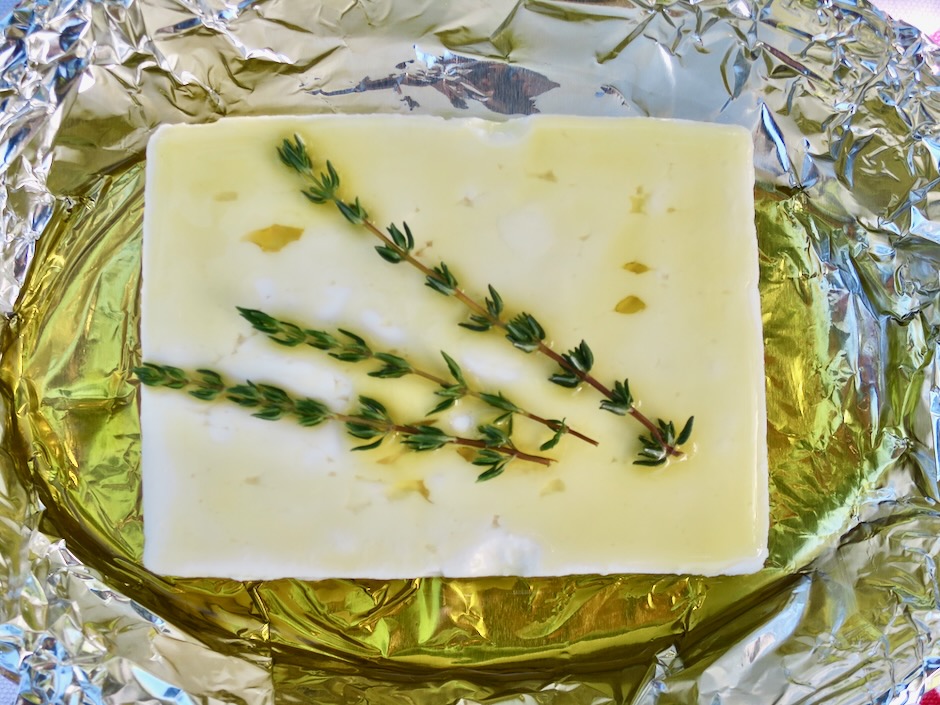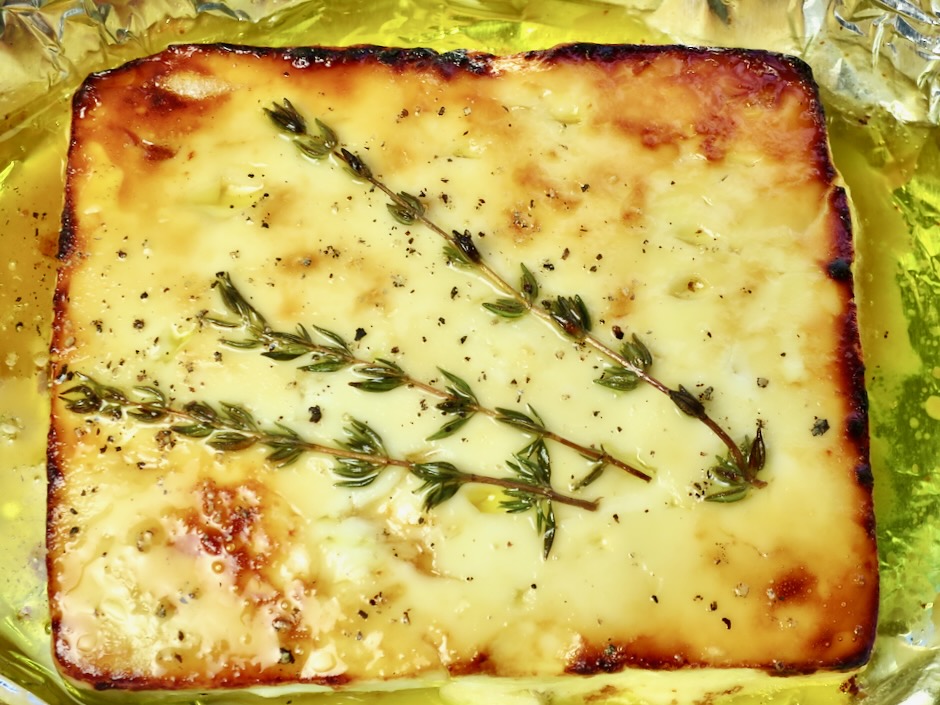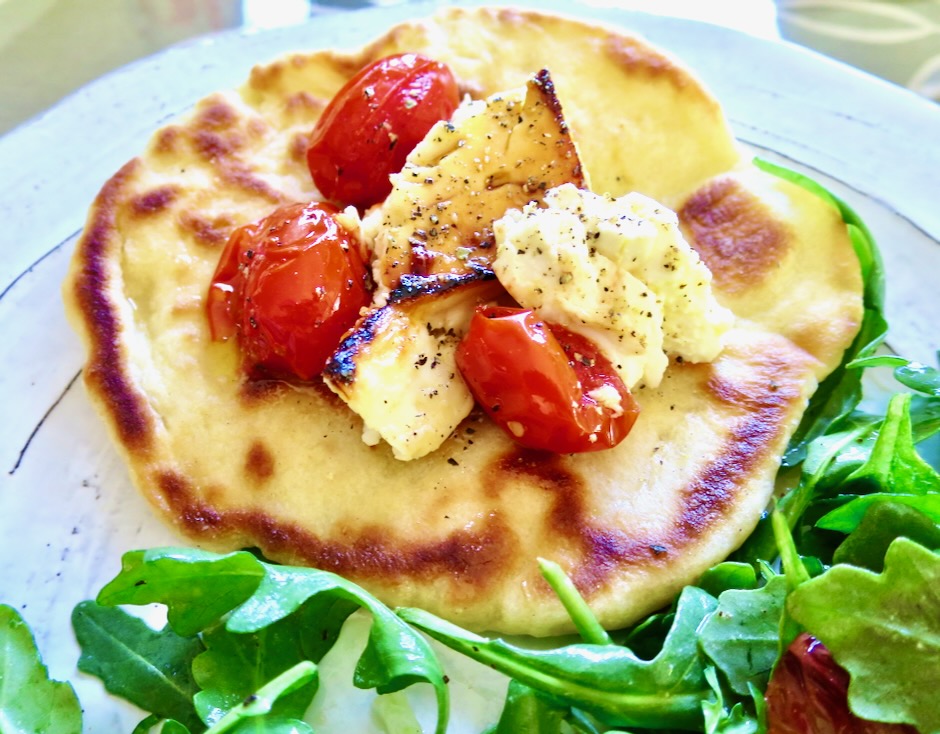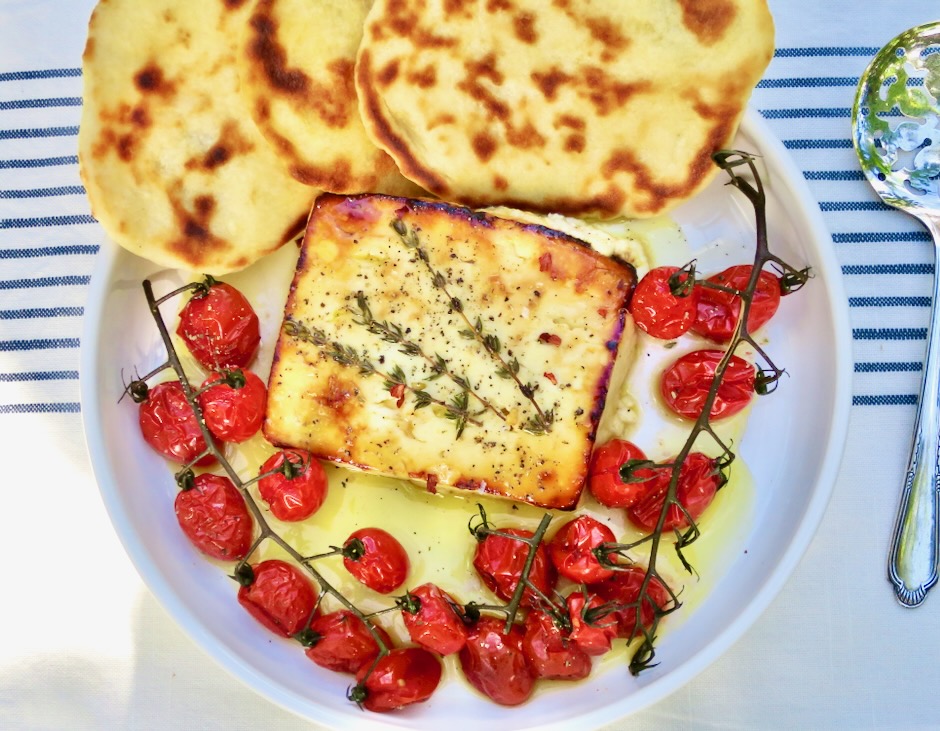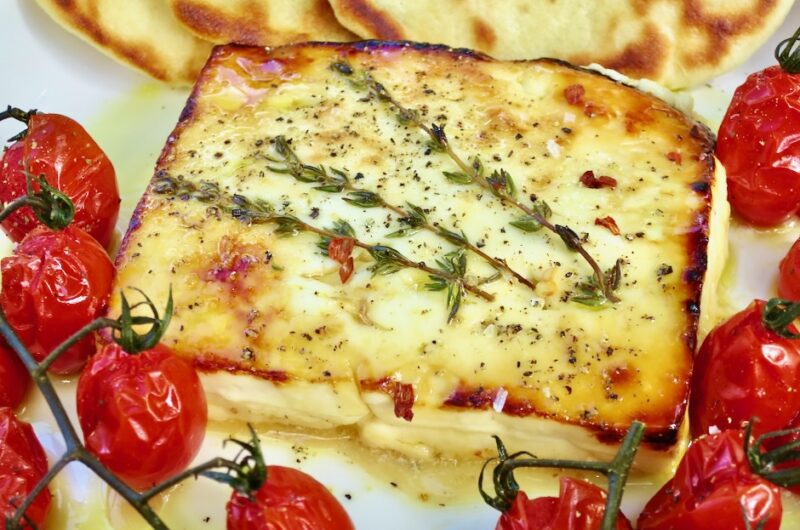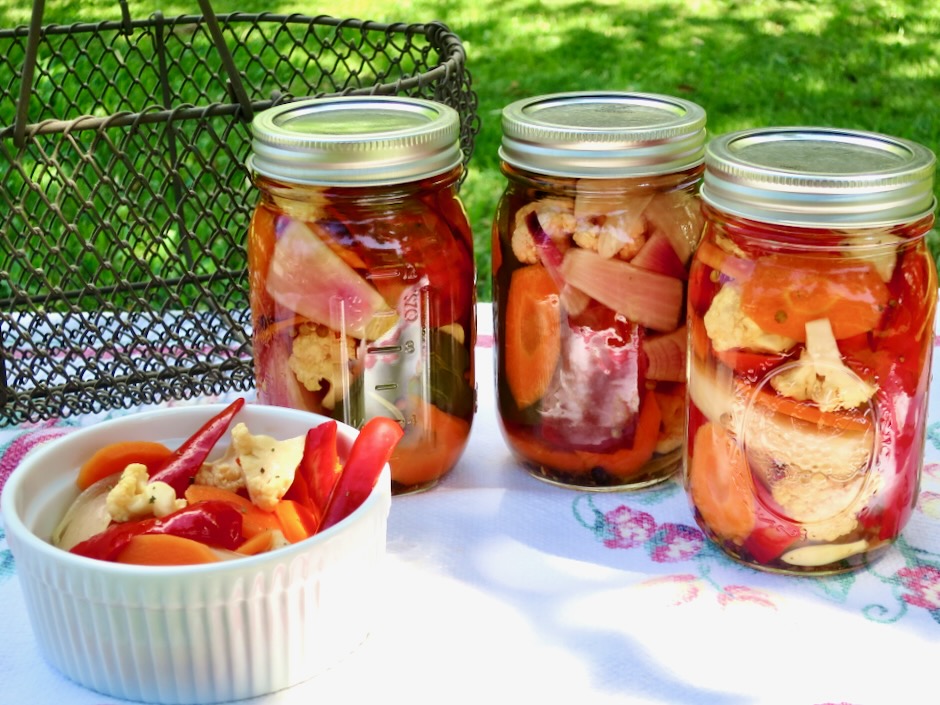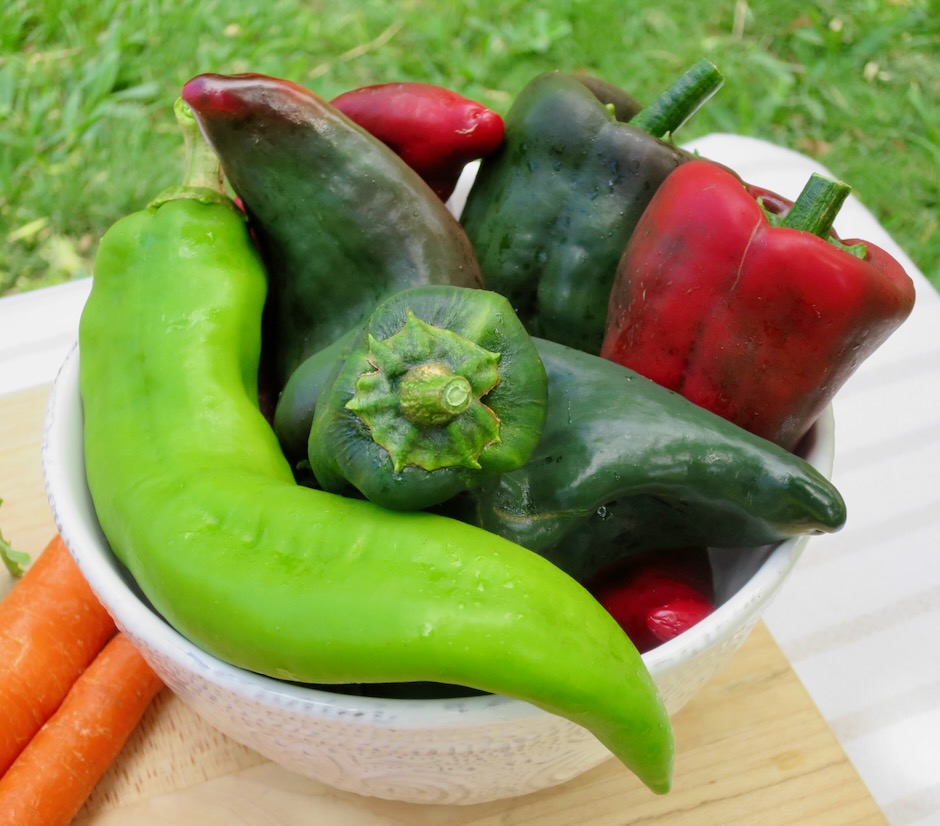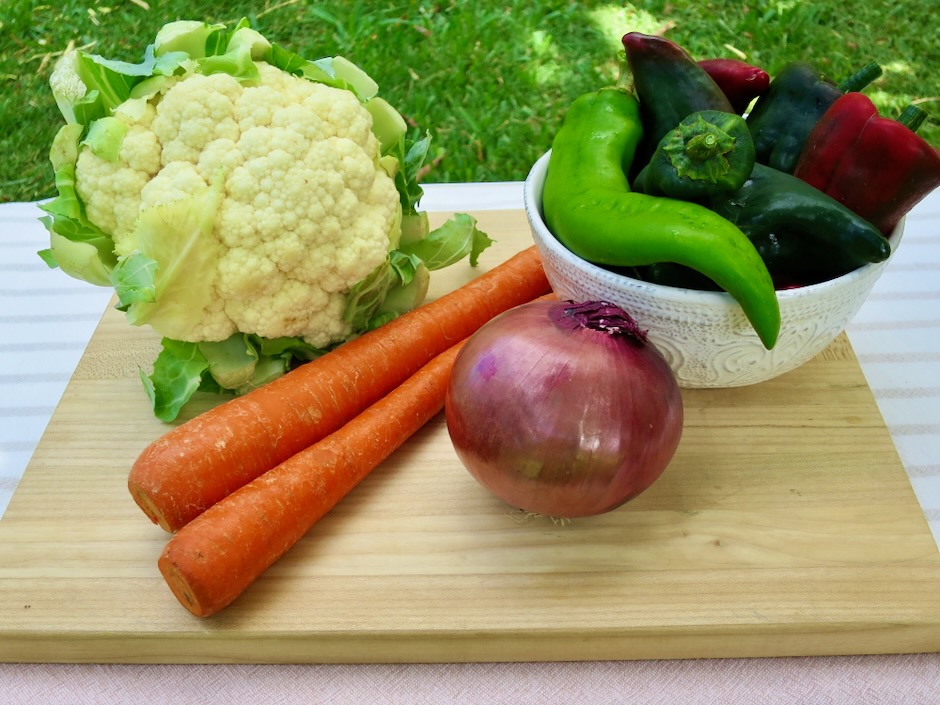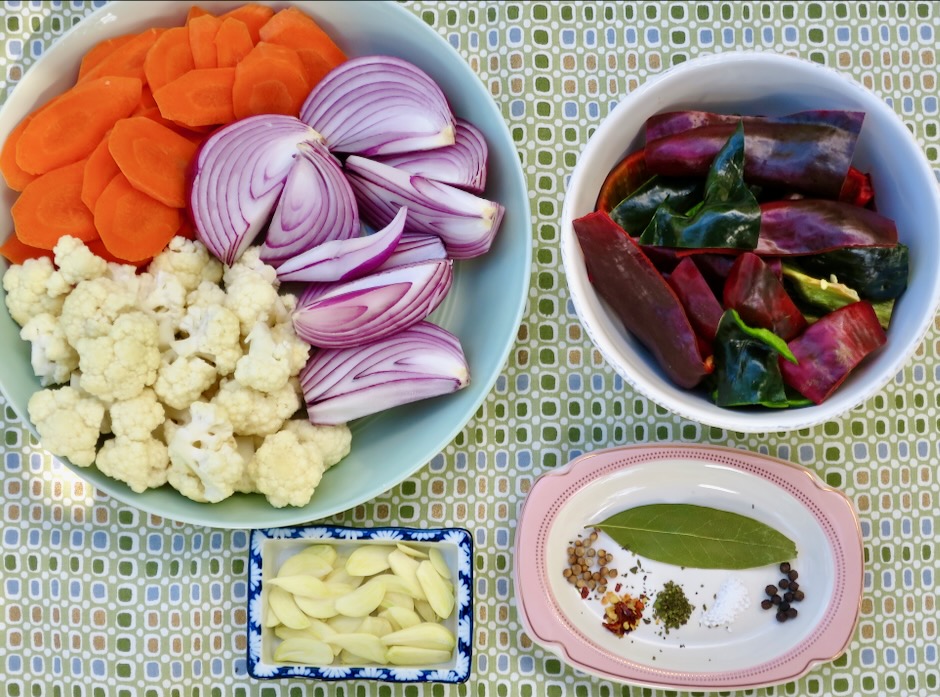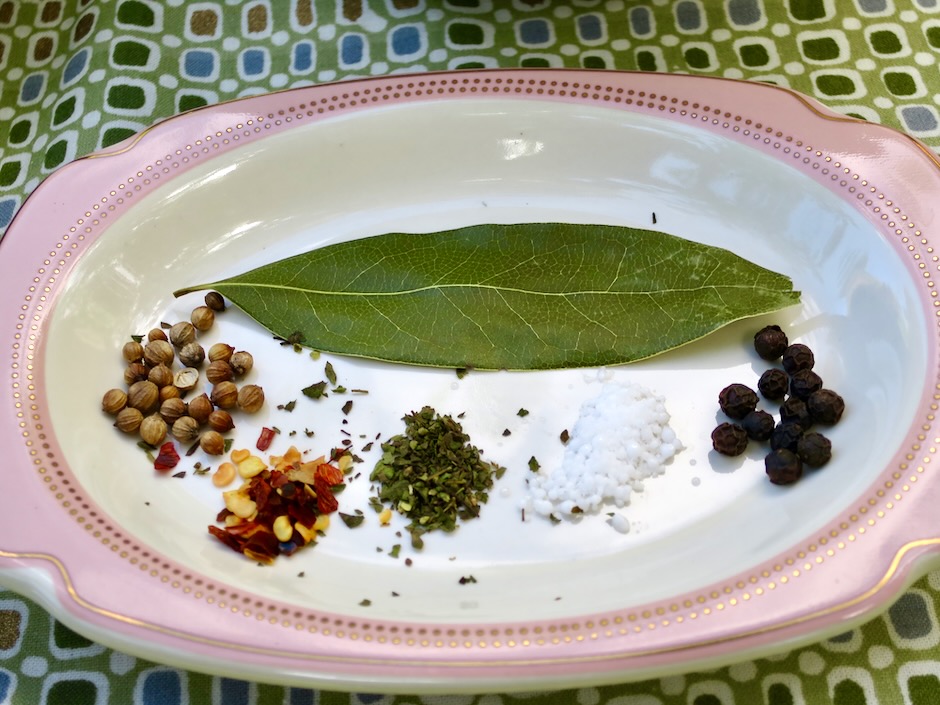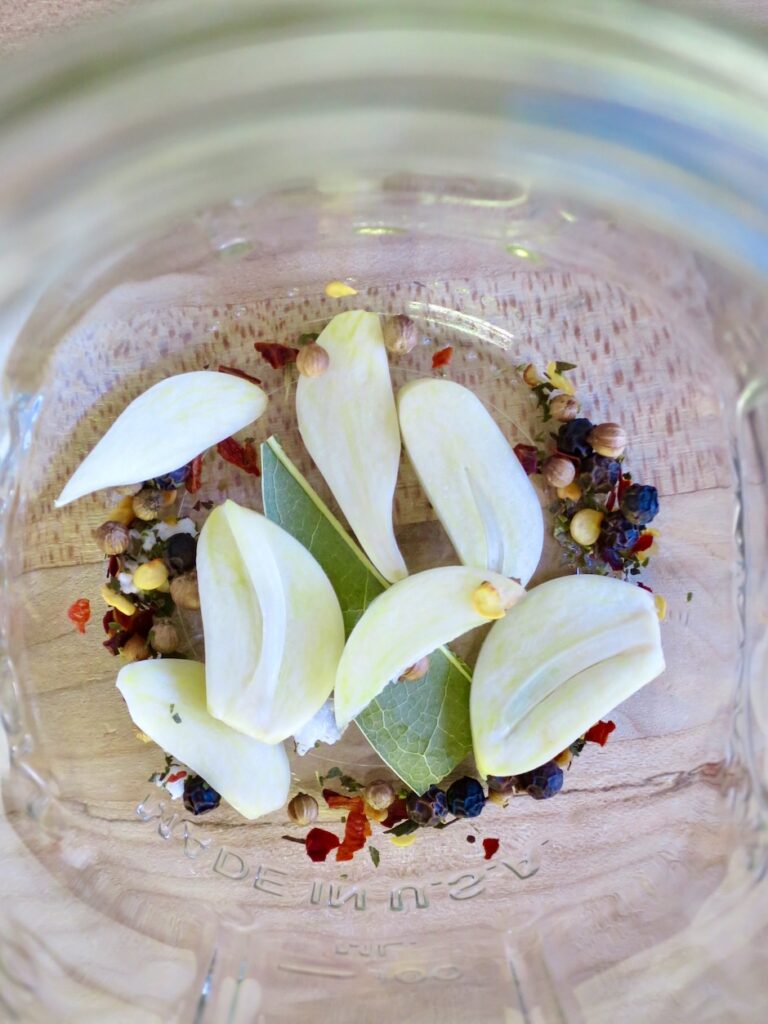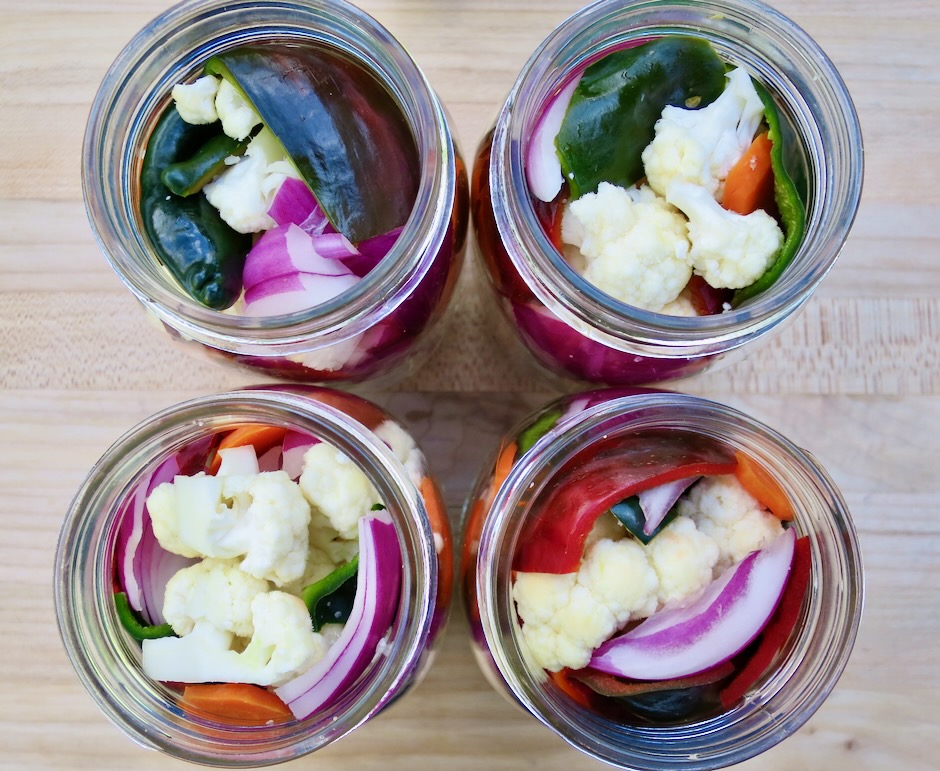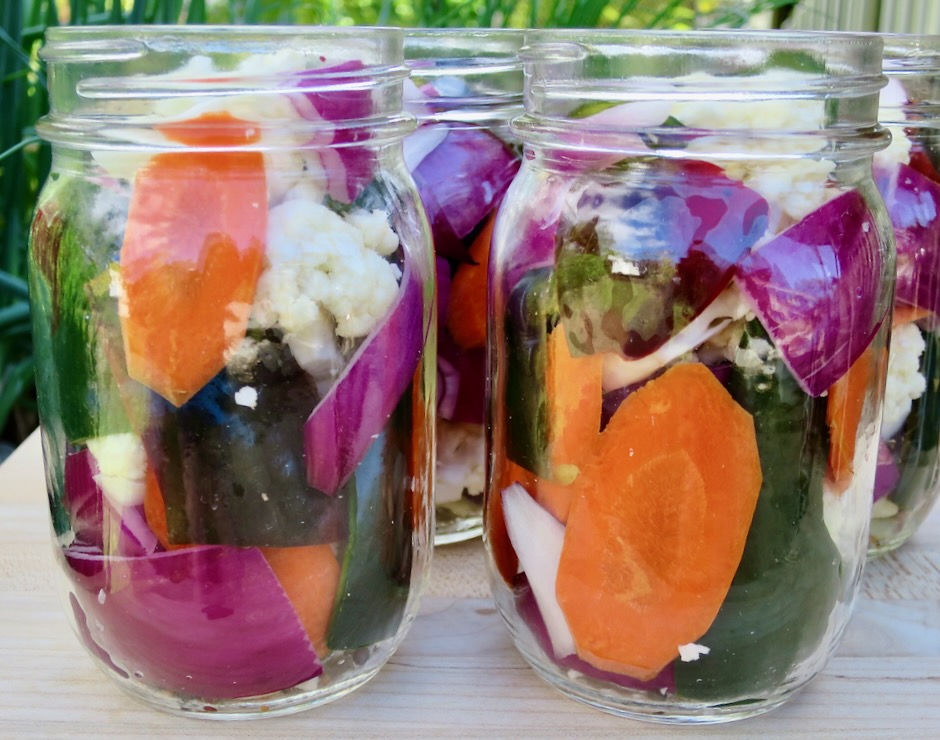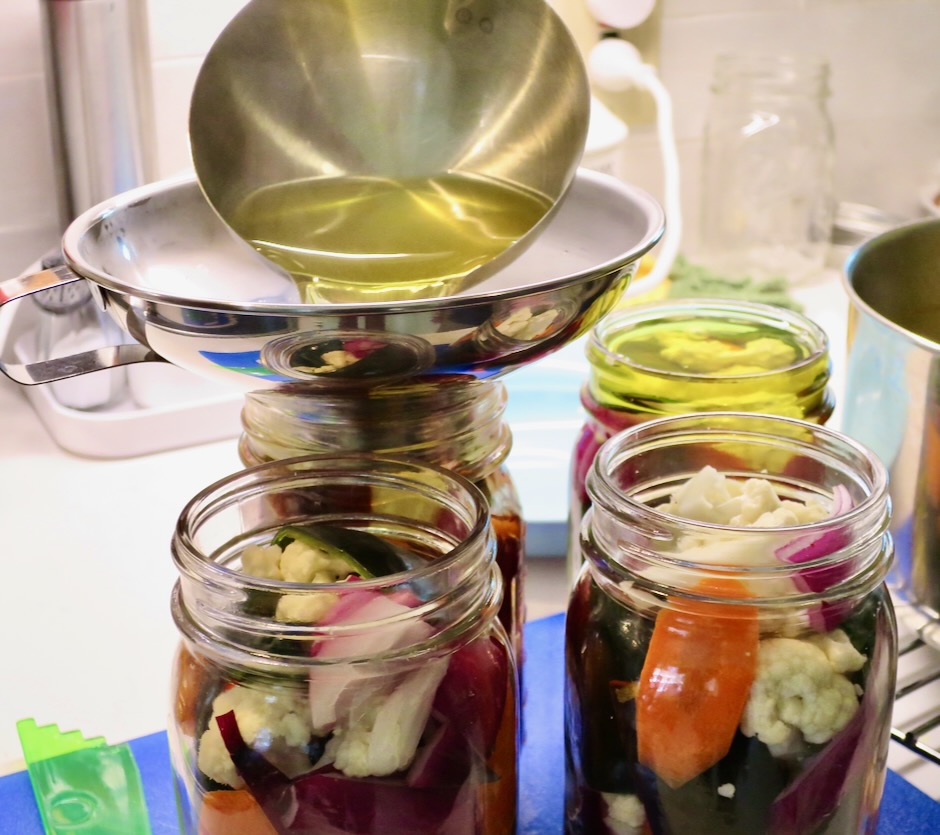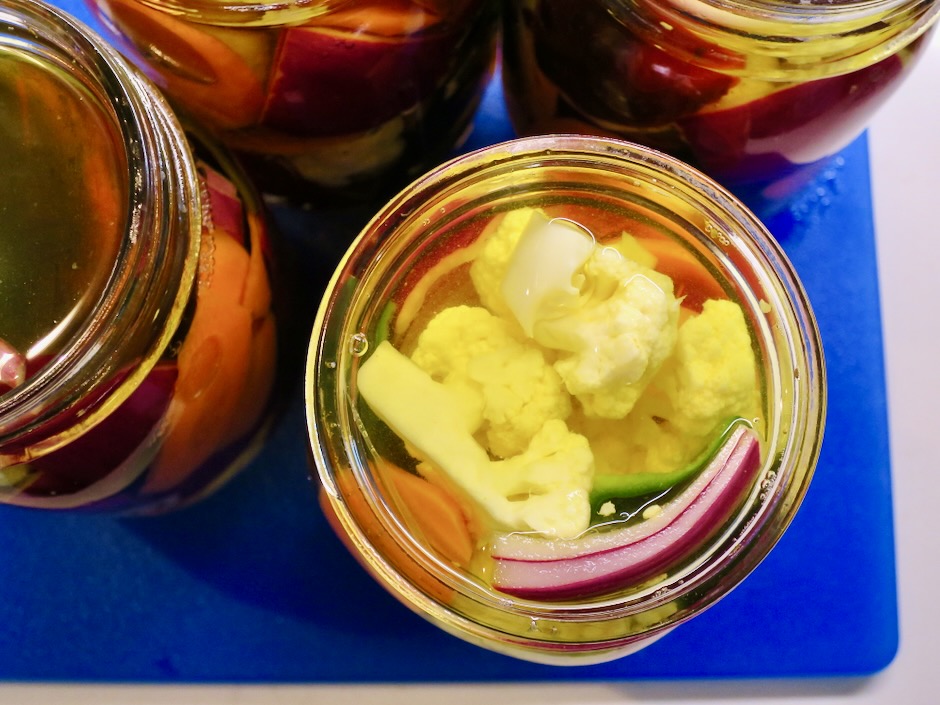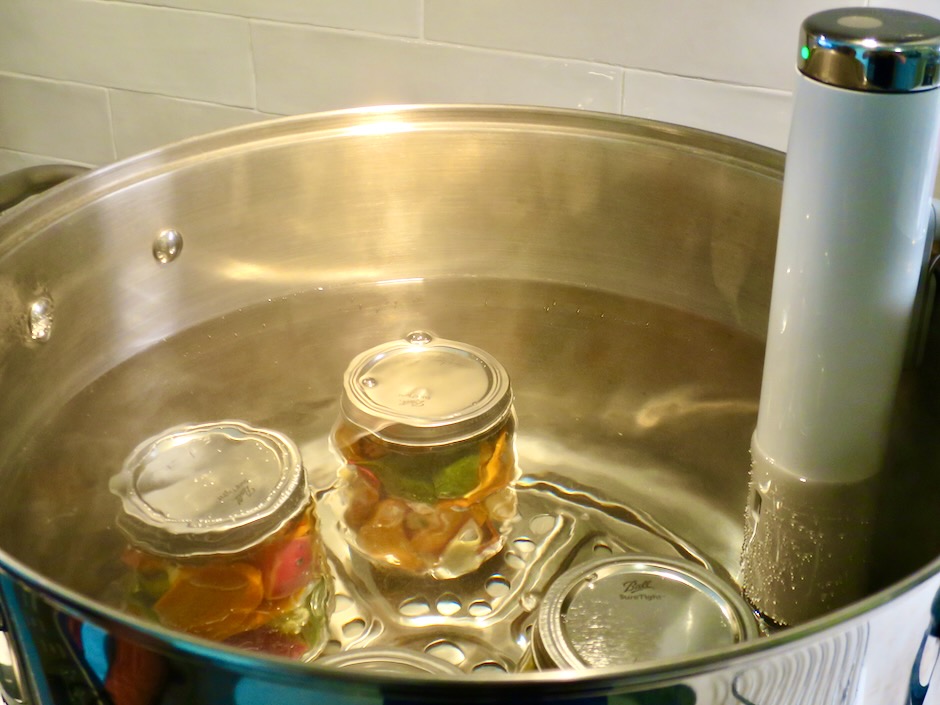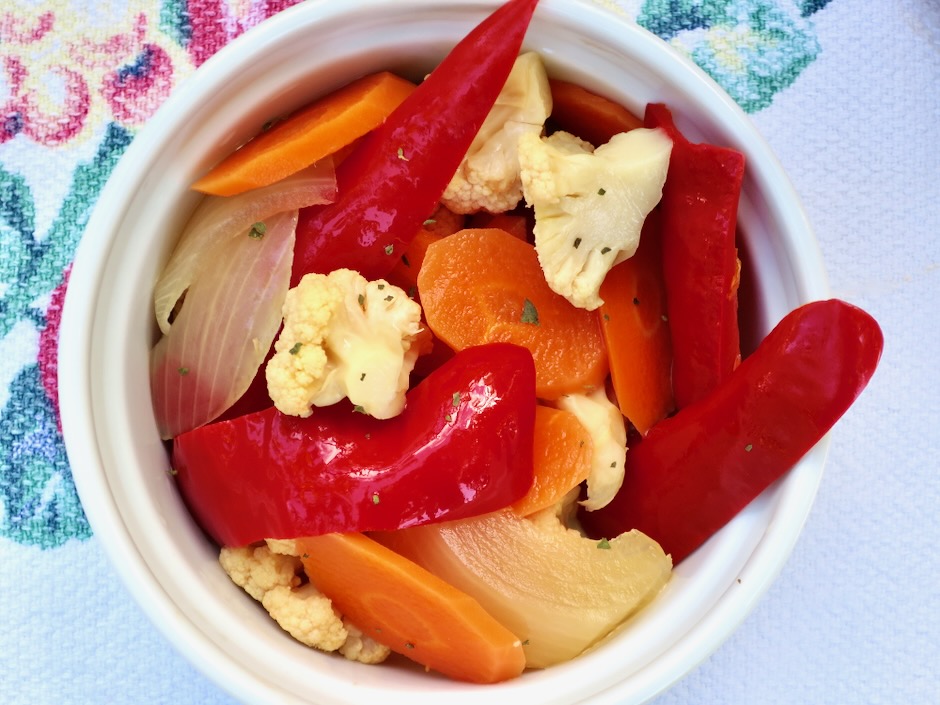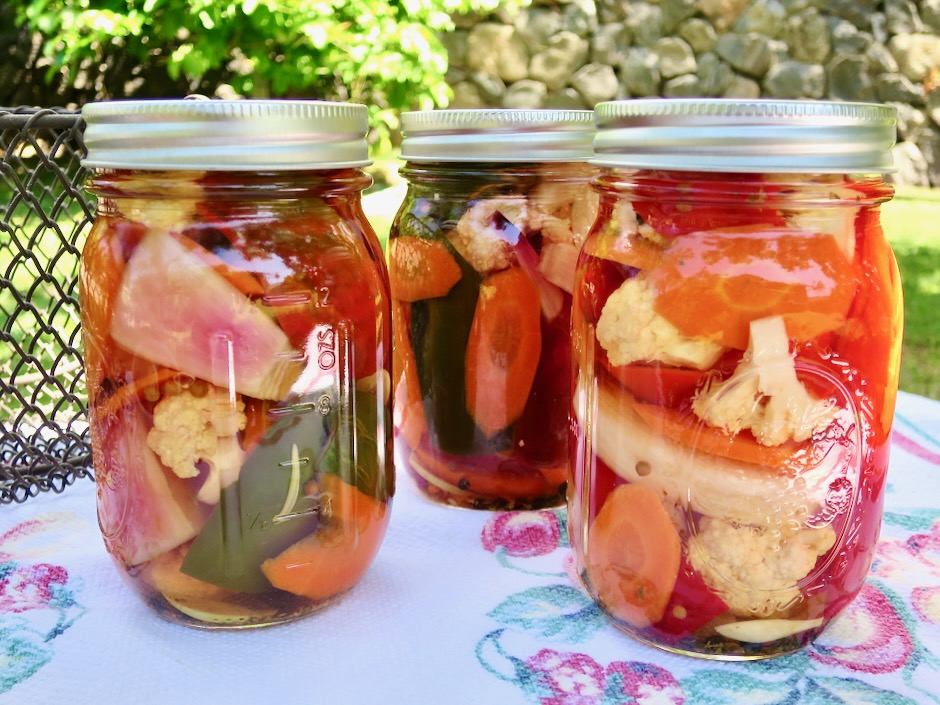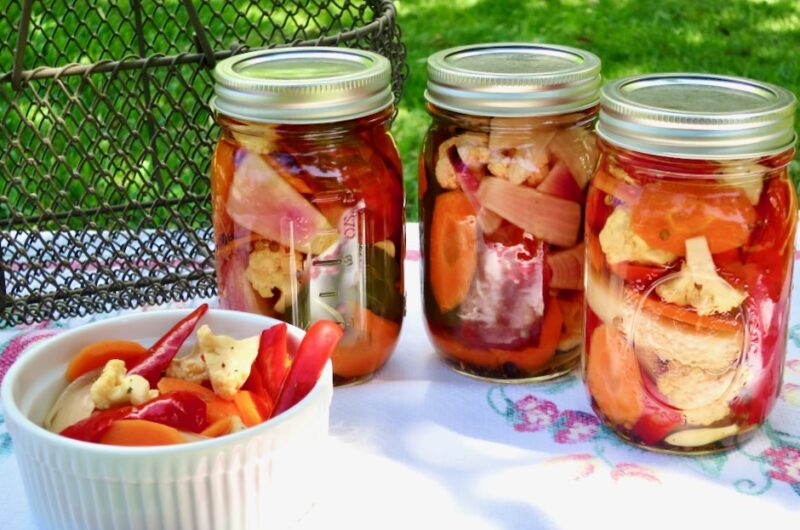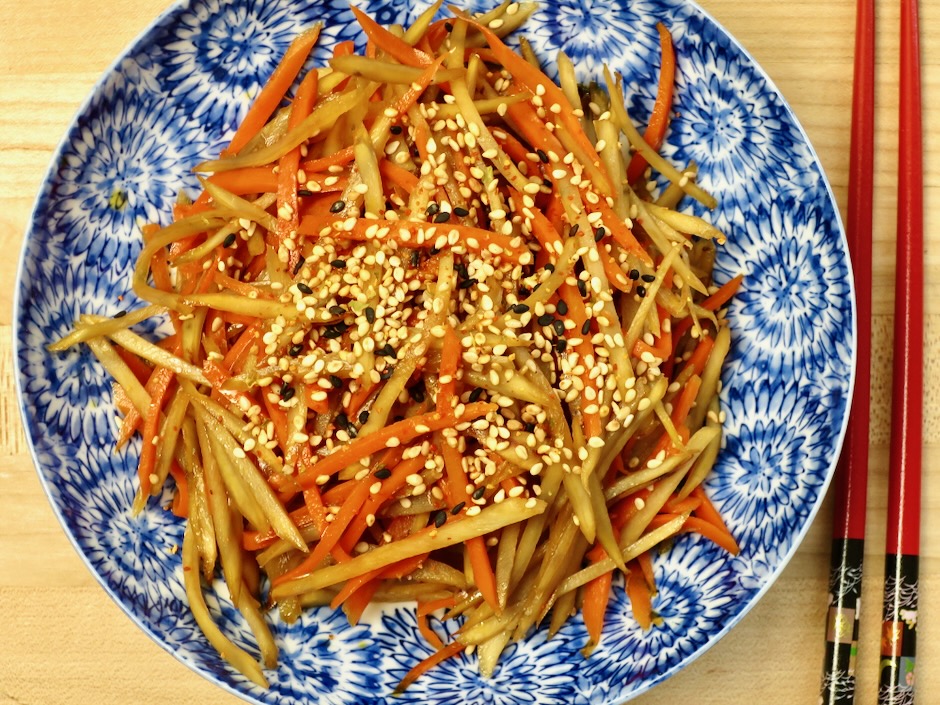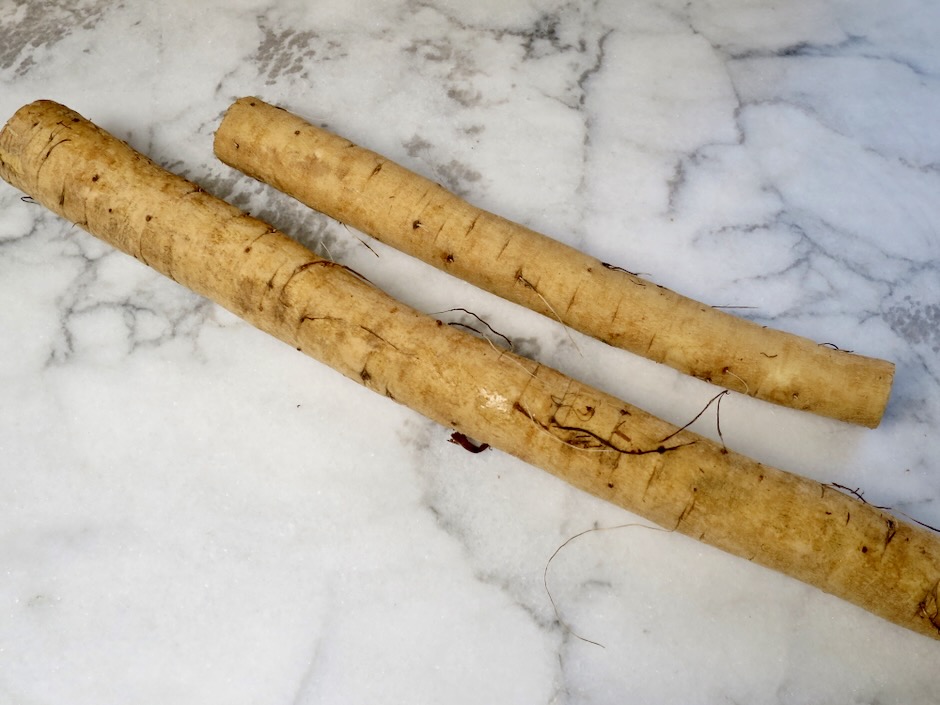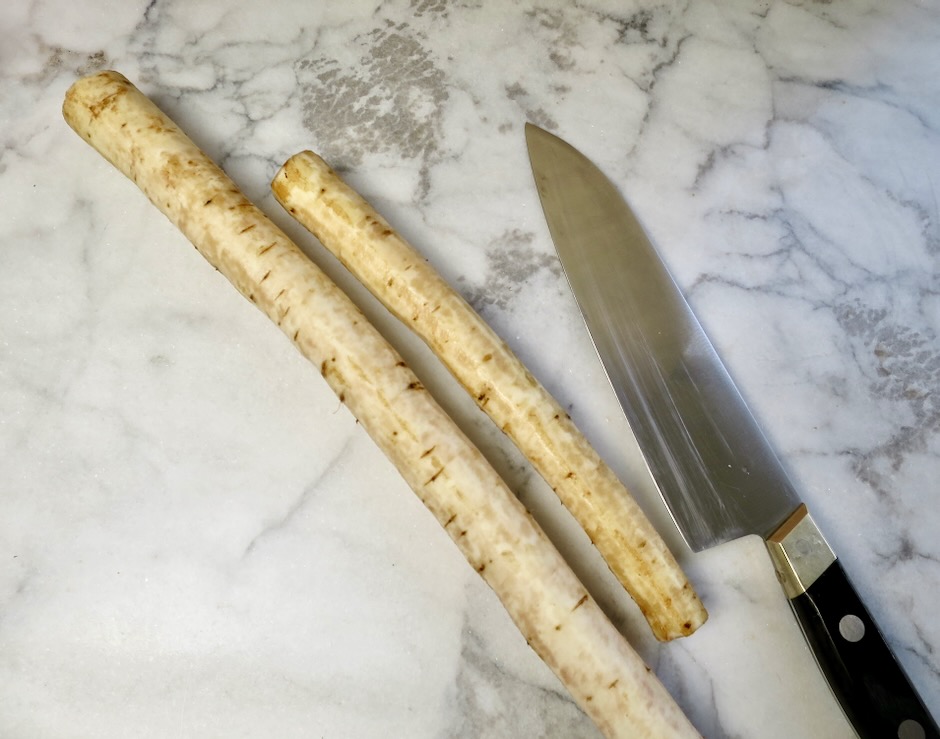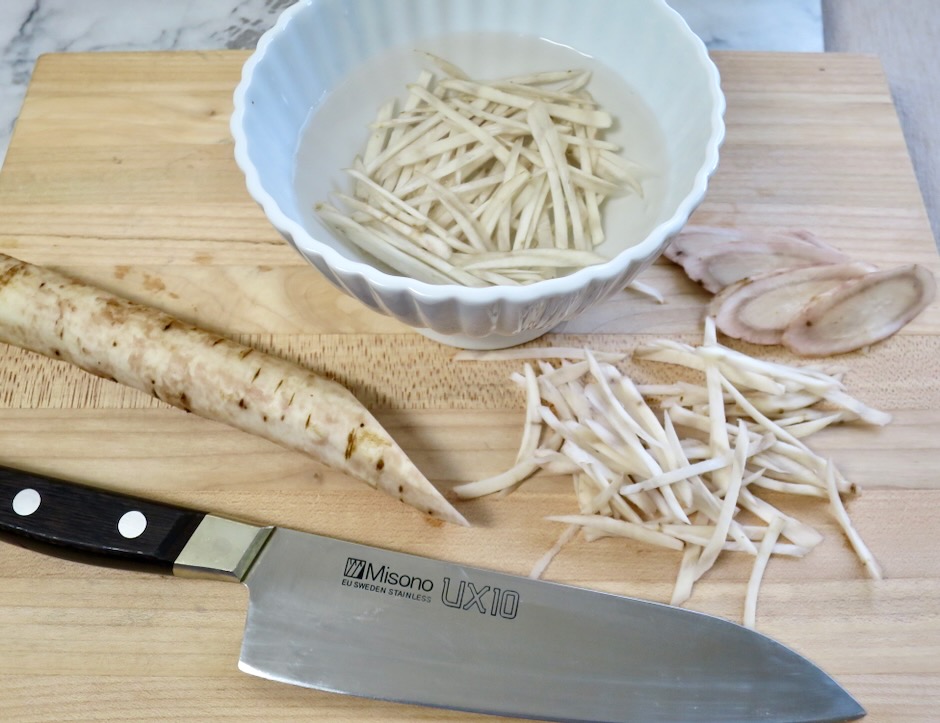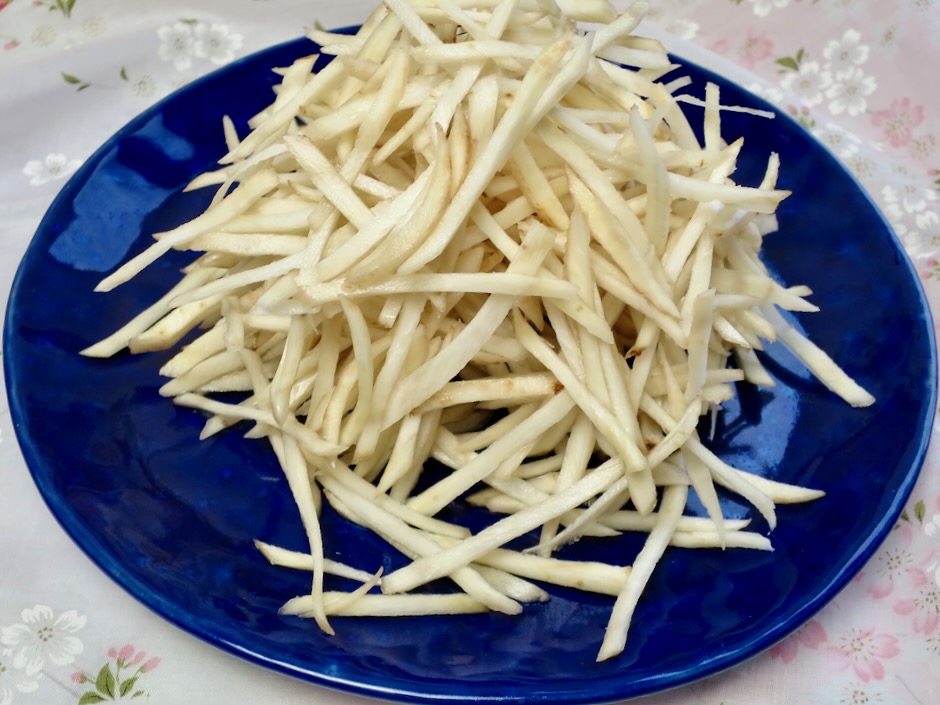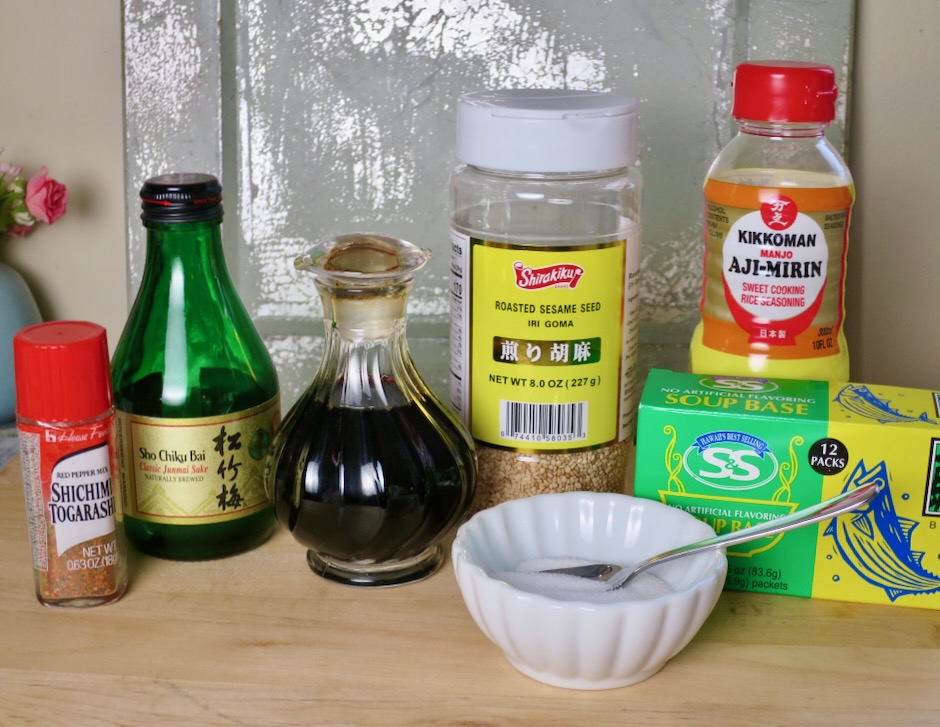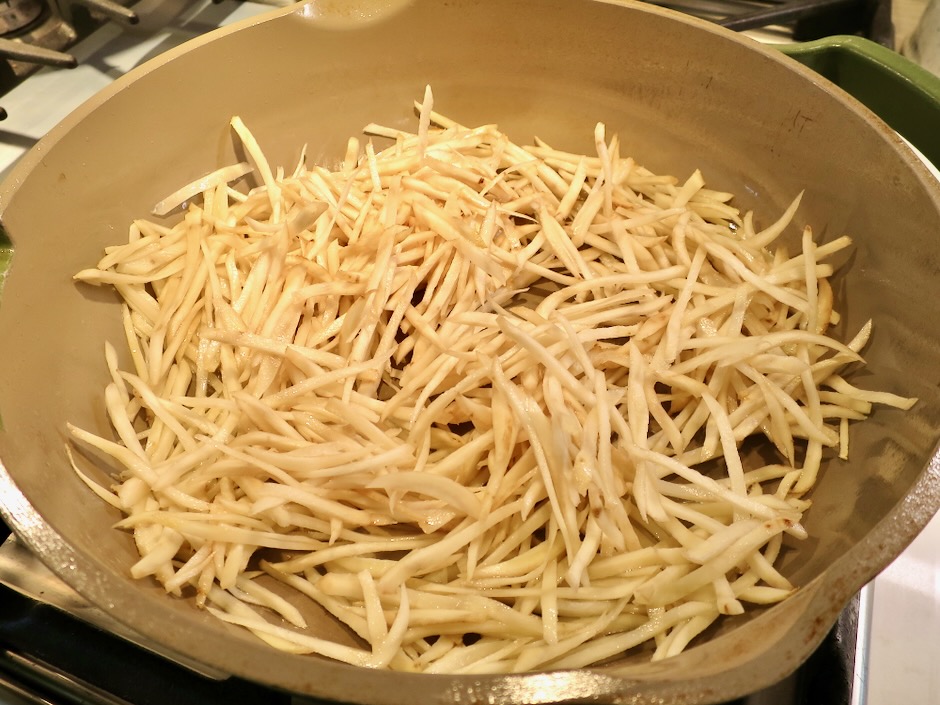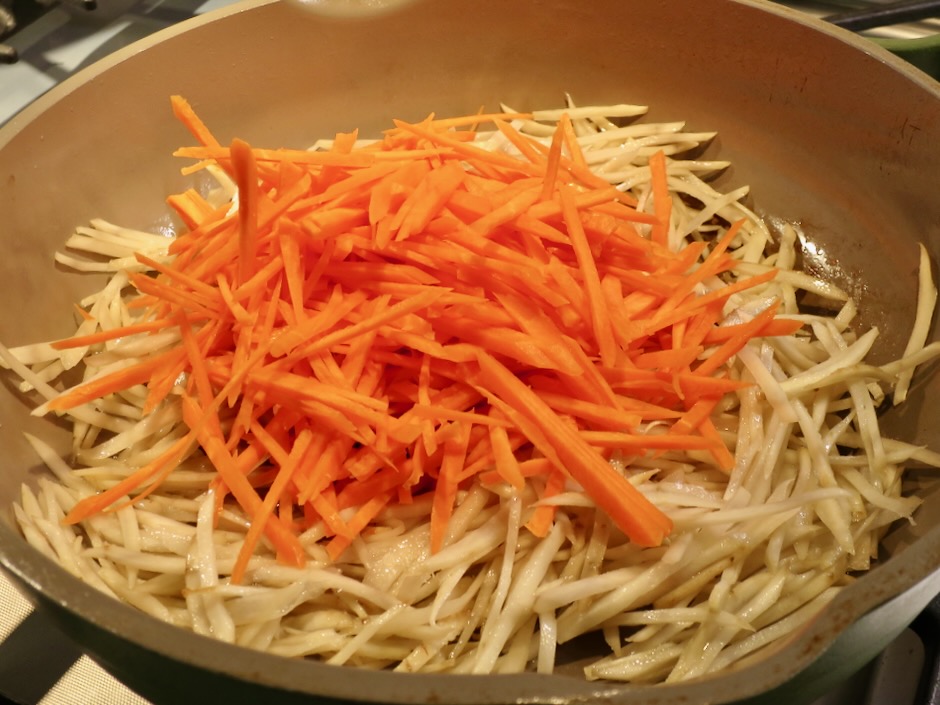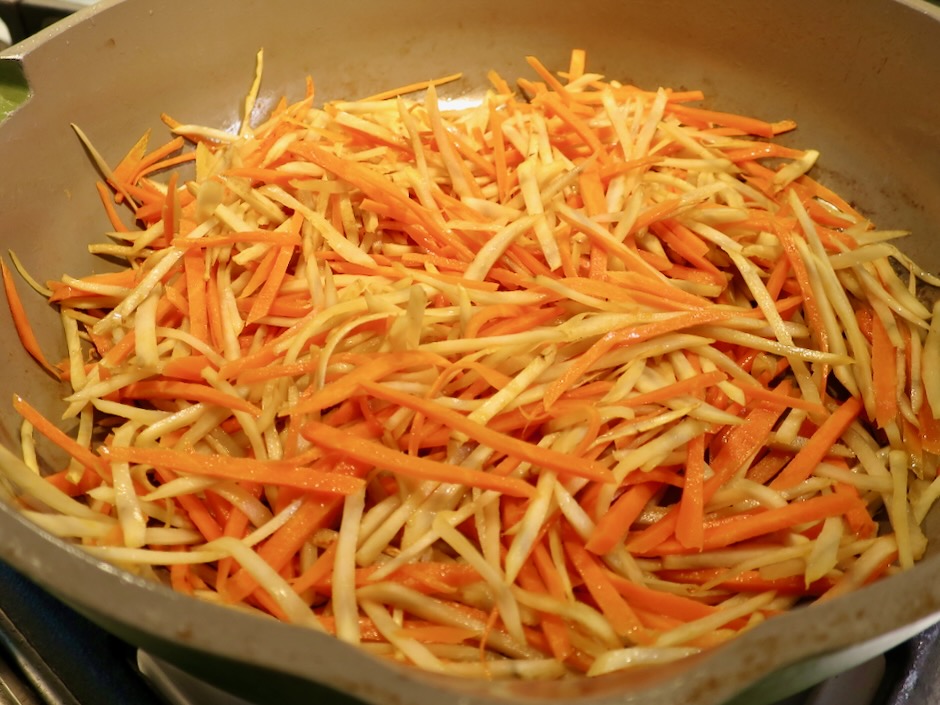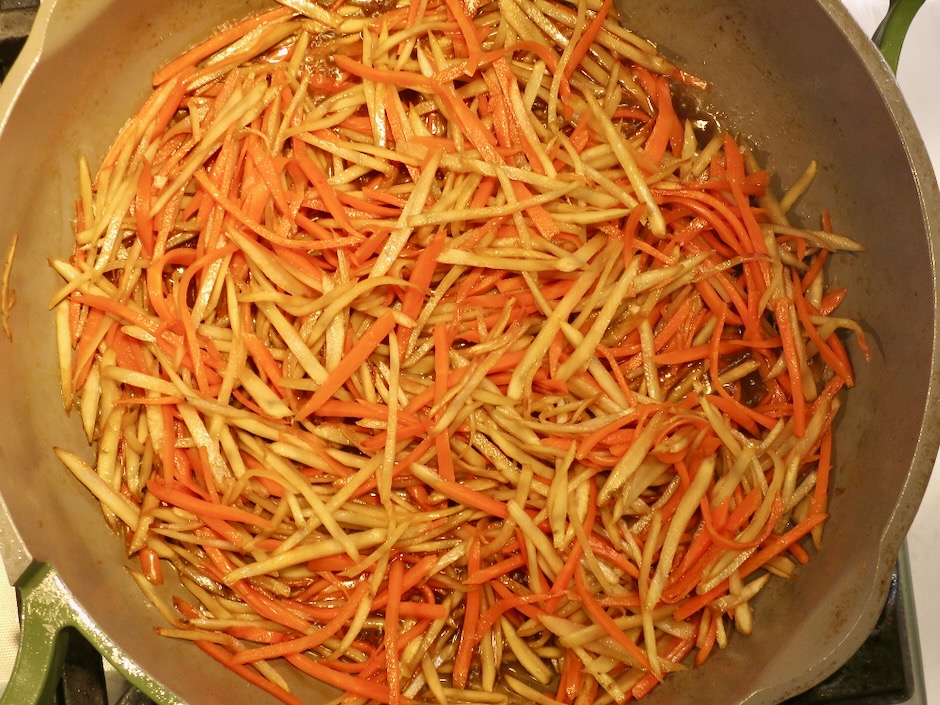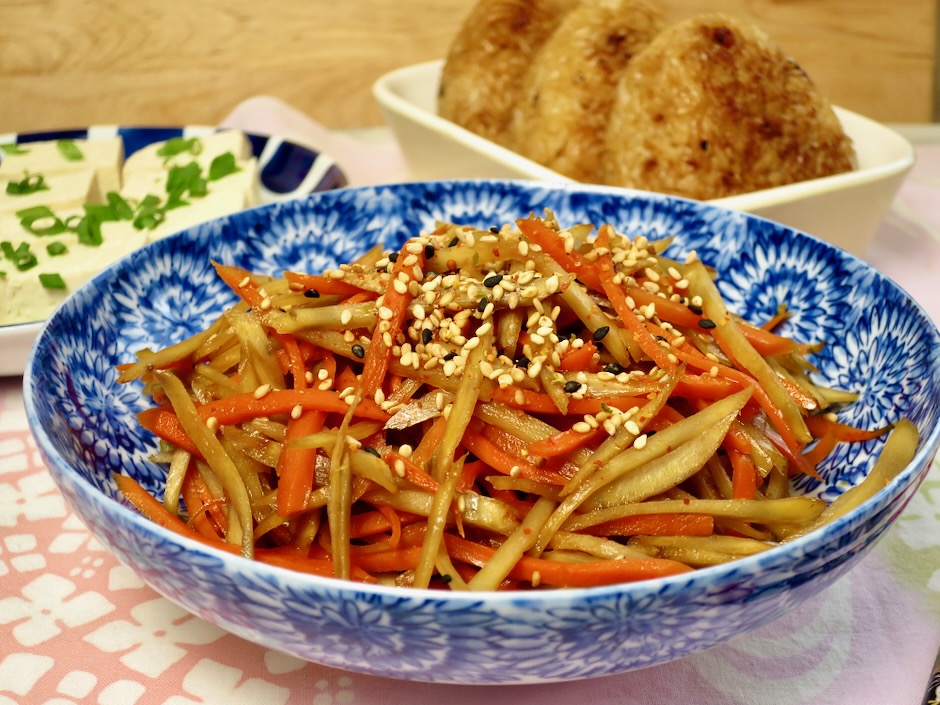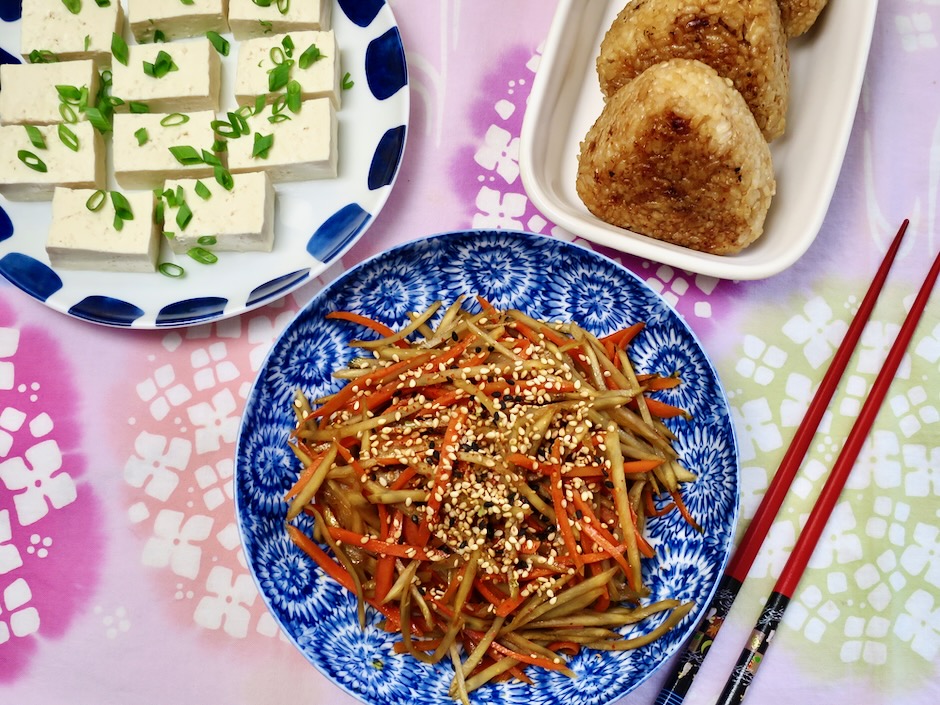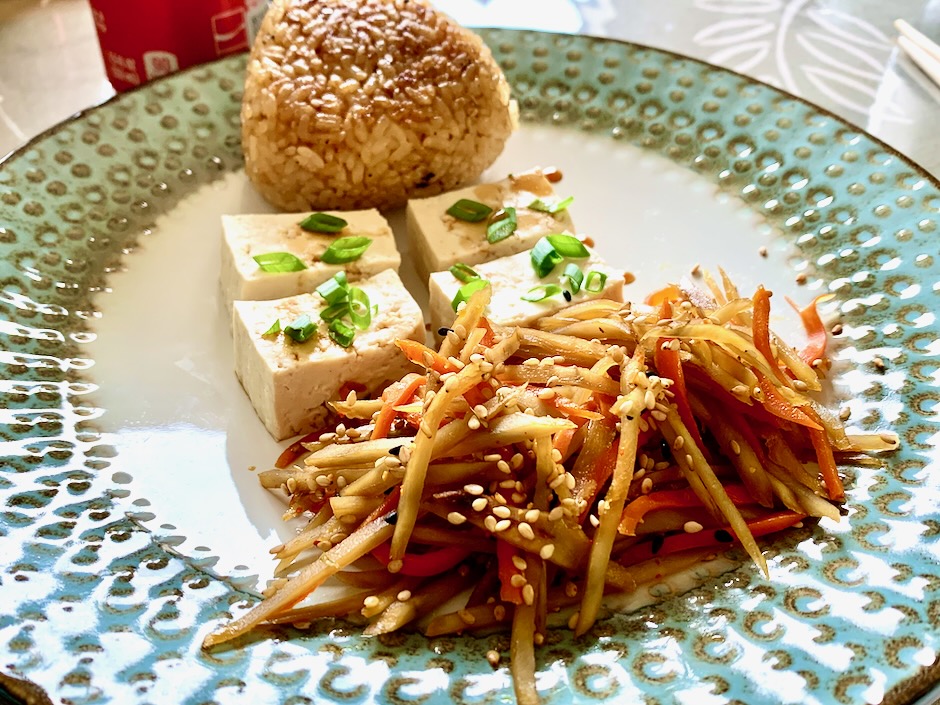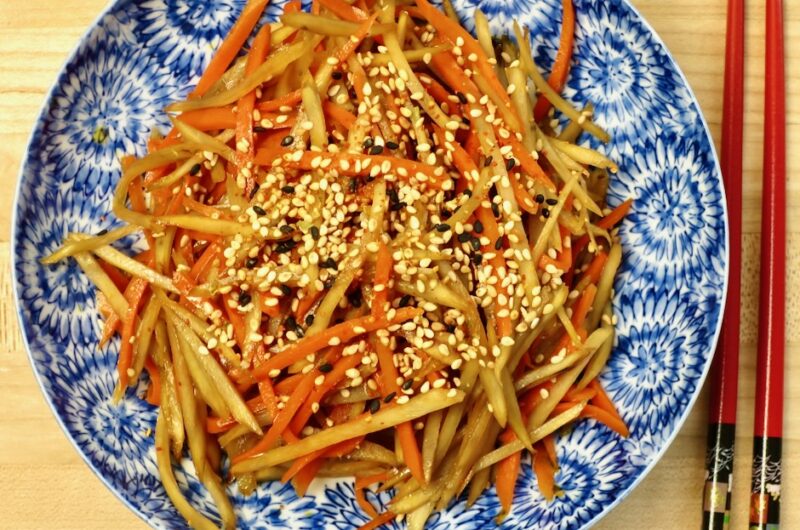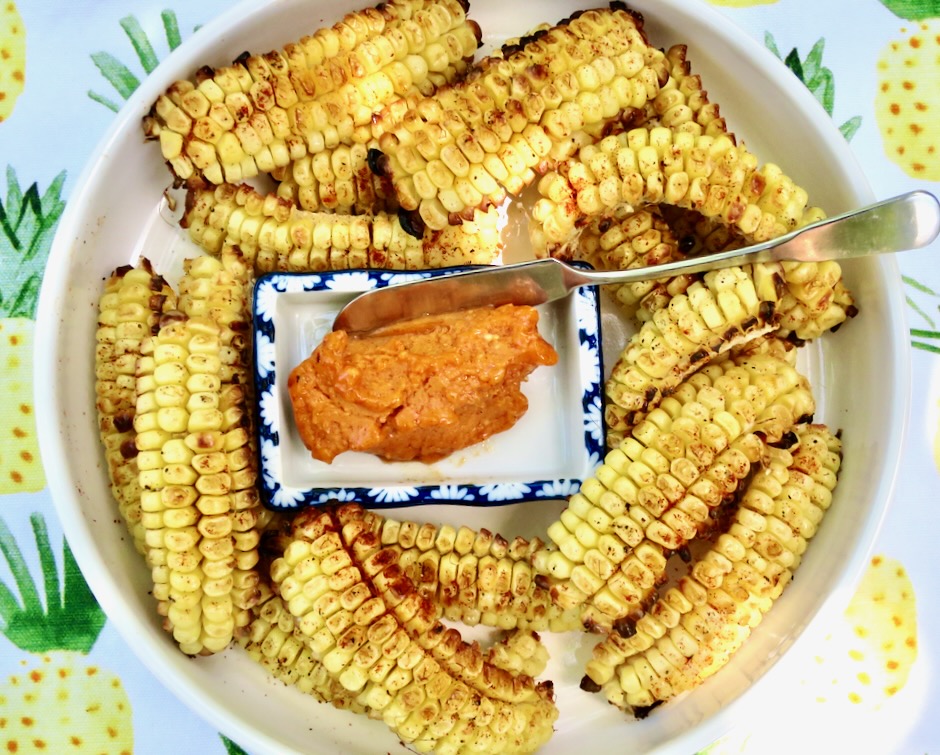
If there is a better way to do corn on the cob than as corn “ribs” I have yet to find it. They are so good I’ve made them twice a week for three weeks in a row. I know I’m late to the game, corn ribs became a thing back in 2021. A recipe for corn ribs went viral on TikTok and ever since, people have been making corn ribs their thing too. There are tons of variations for seasoning corn ribs. Spicy, sweet, cheesy, buttery, herby and so on. This recipe comes from Bon Appetit and it’s just about perfect. Buttery, sweet and smoky.
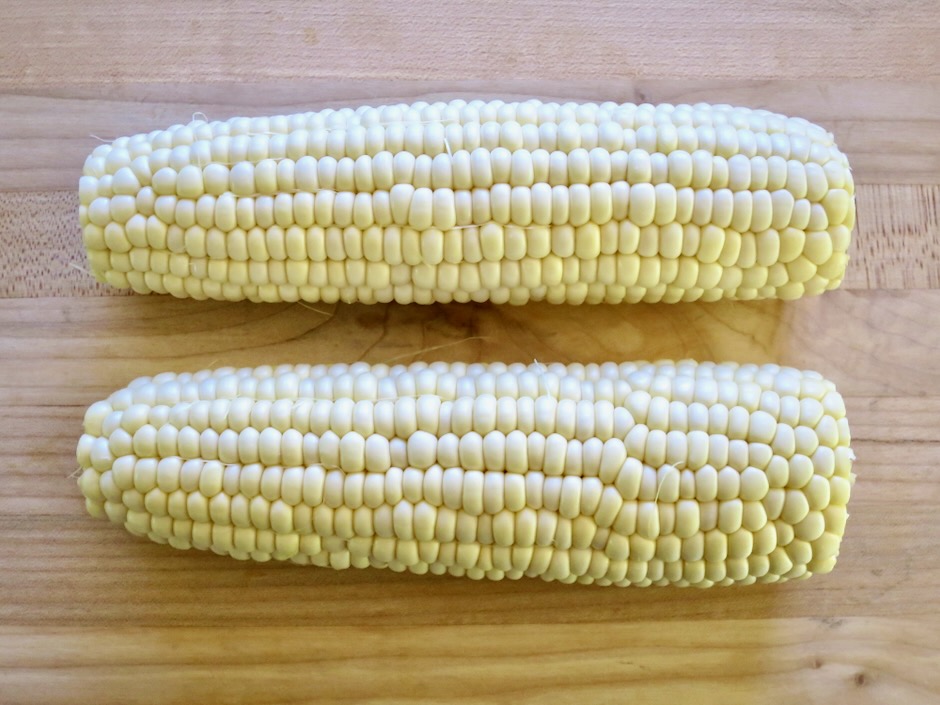
The first time I tried to cut the corn into ribs I almost gave up. The corn cob is tough and hard to cut through. There were corn kernels on the floor, counter and backsplash, oops. I asked my husband to give me a hand. We tried a few different knives and found two that worked great along with a mezzaluna. I know that not everyone has a mezzaluna but it sure came in handy for cutting corn ribs.
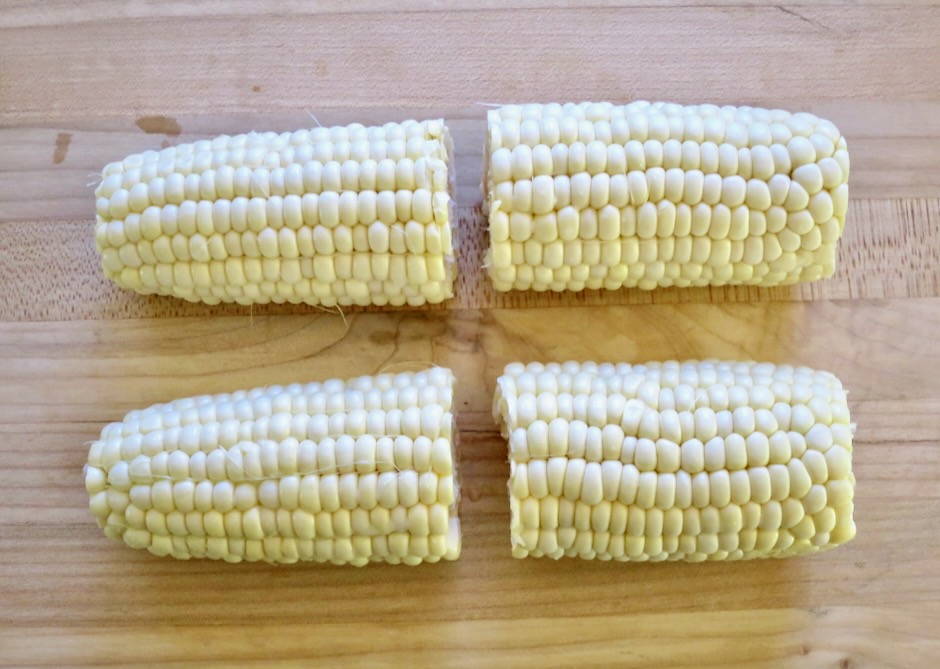
The first step after removing the husk and silk from the corn is to cut off the ends of the corn so they are flat. This is important! The next step is to cut the corn in half diagonally. This will make it much easier to cut the corn into riblets and being shorter to cut through means less risk of accidents. It is much more difficult to cut down the entire length of the corn cob when it is long. You will now be able to stand the corn on end and cut into riblets.
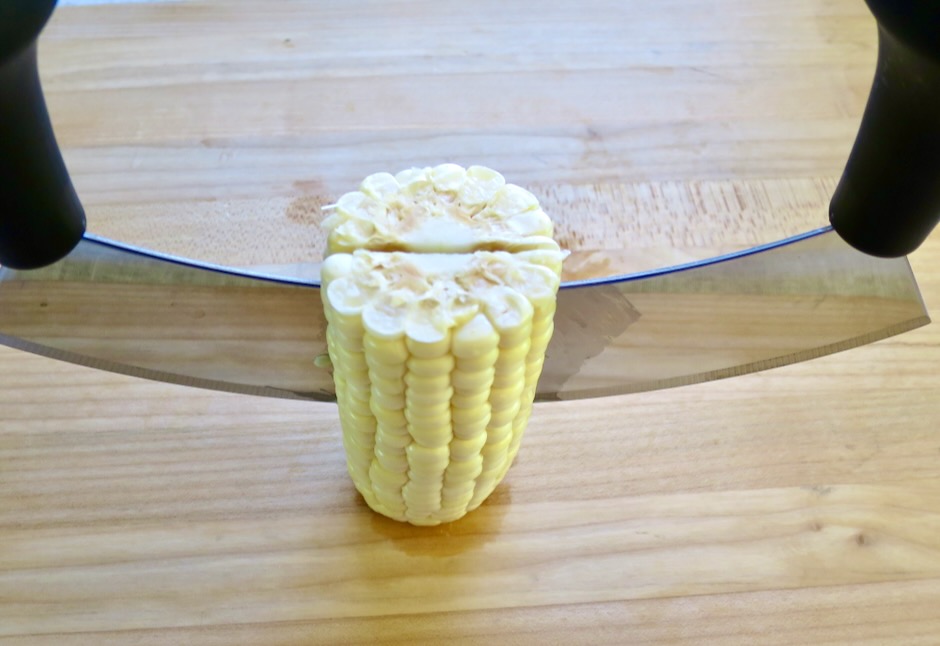
Here we are cutting the corn in half with a mezzaluna. It worked well because you are able to control your cutting with both hands. It’s very stable.
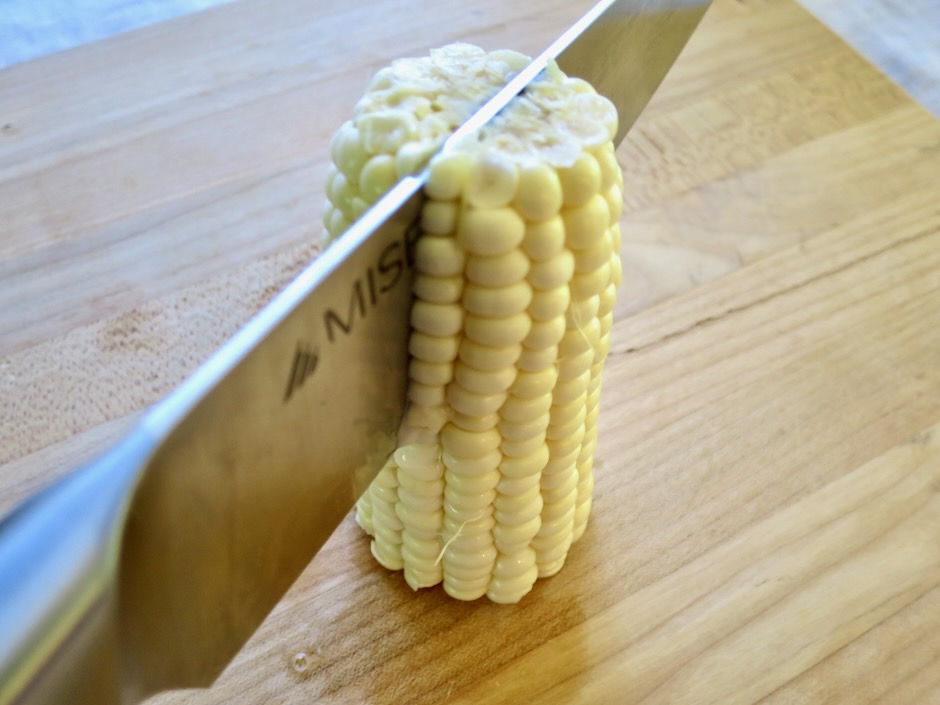
This time we cut the corn in half with a very sharp chef’s knife. It also worked well and will likely be what most people have available.
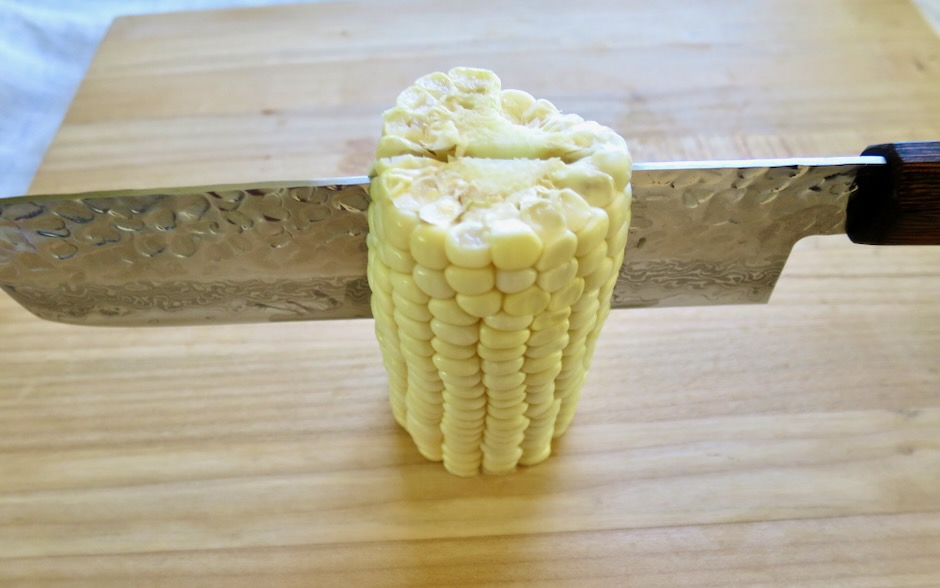
The third option is to use a very sharp Nakiri knife which is a traditional Japanese vegetable knife.
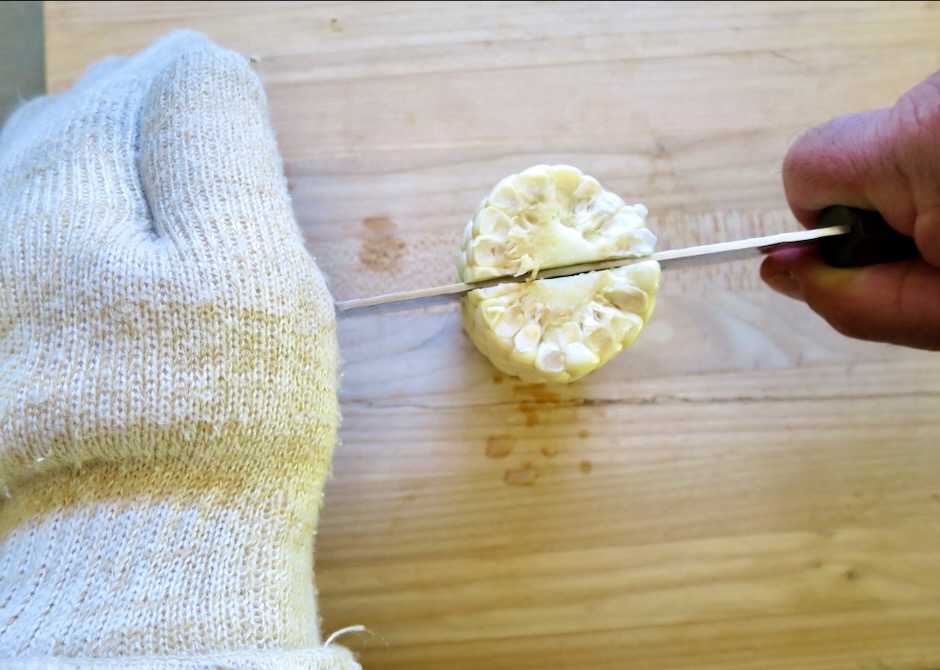
When slicing the corn with a chef’s or Nakiri knife, wearing a thick oven glove will help to stabilize the knife while you use pressure to cut through the corn cob.
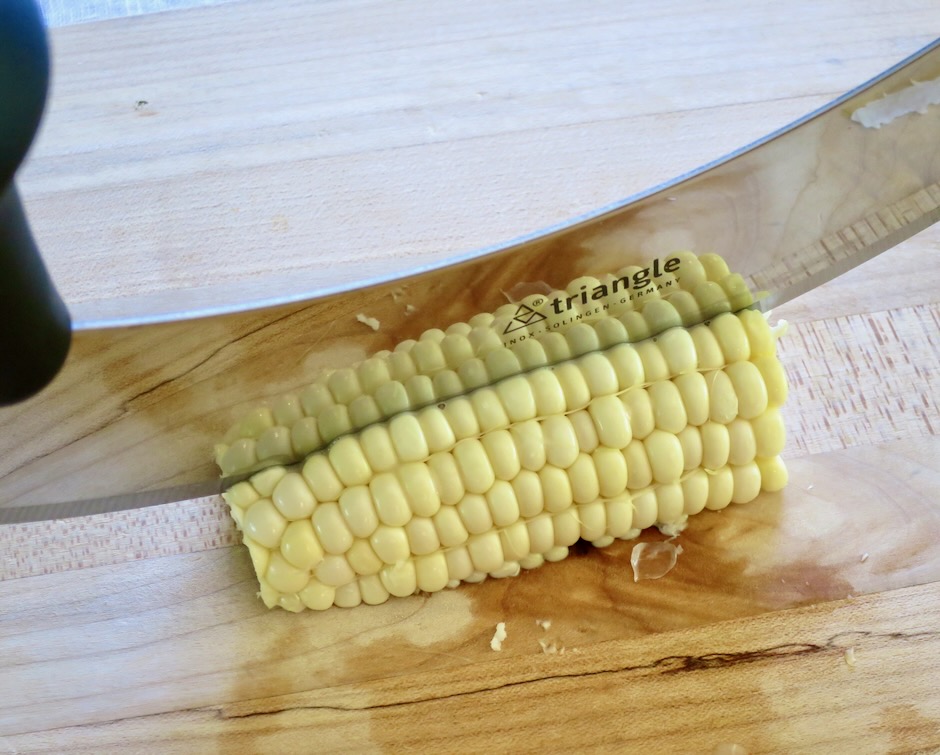
The mezzaluna was the winner for cutting the corn into quarters but both the chef’s knife and Nikiri knife also worked.
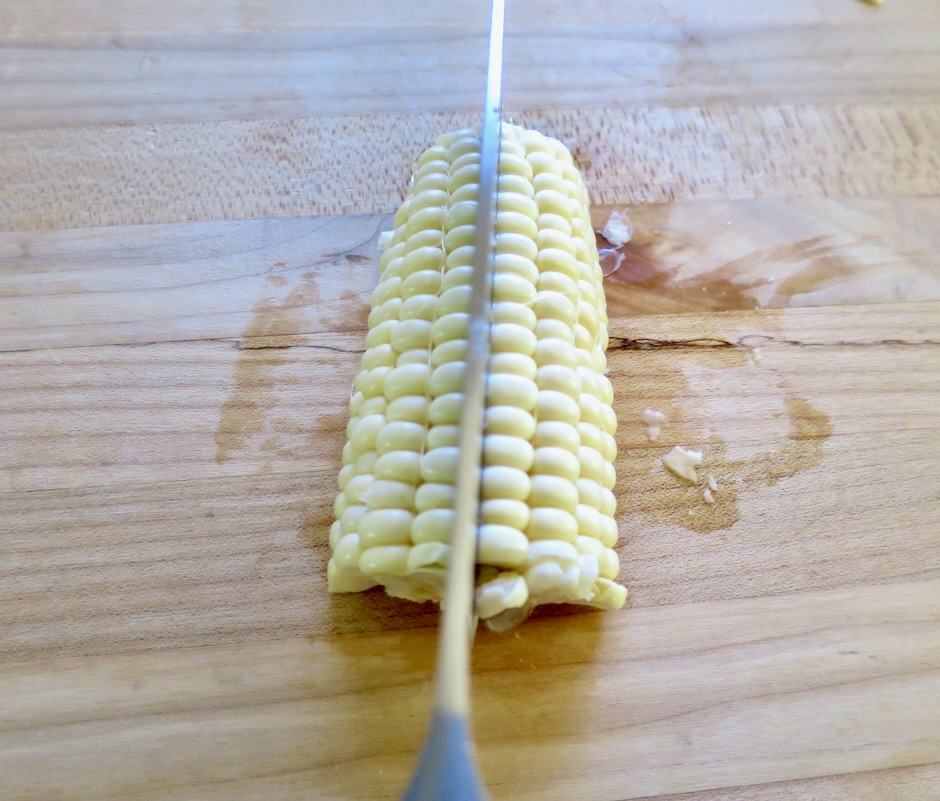
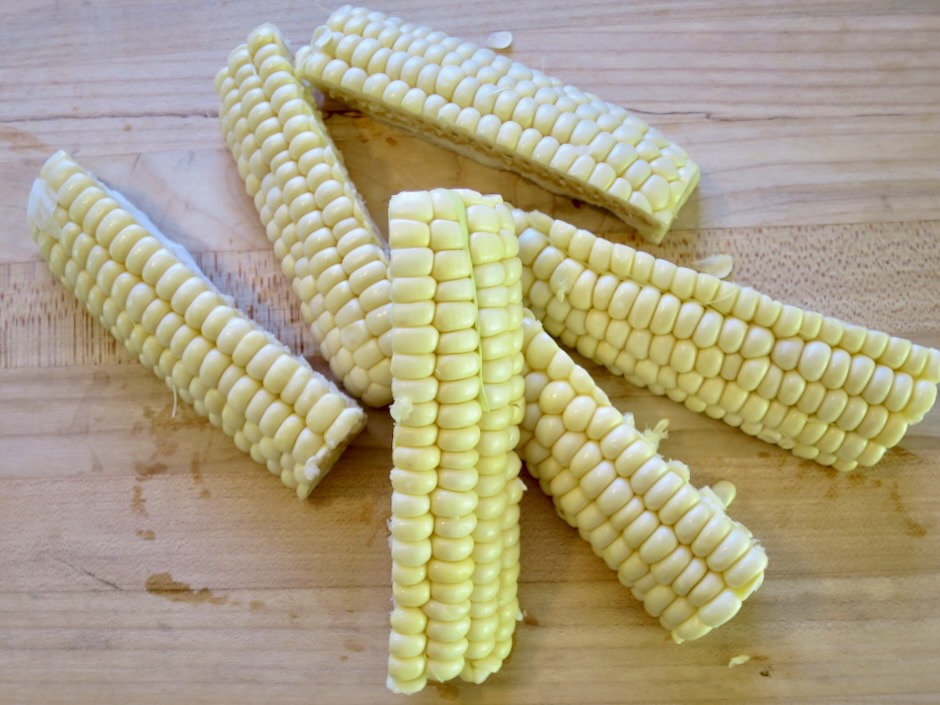
This is what your corn should look like once you cut it into riblets.
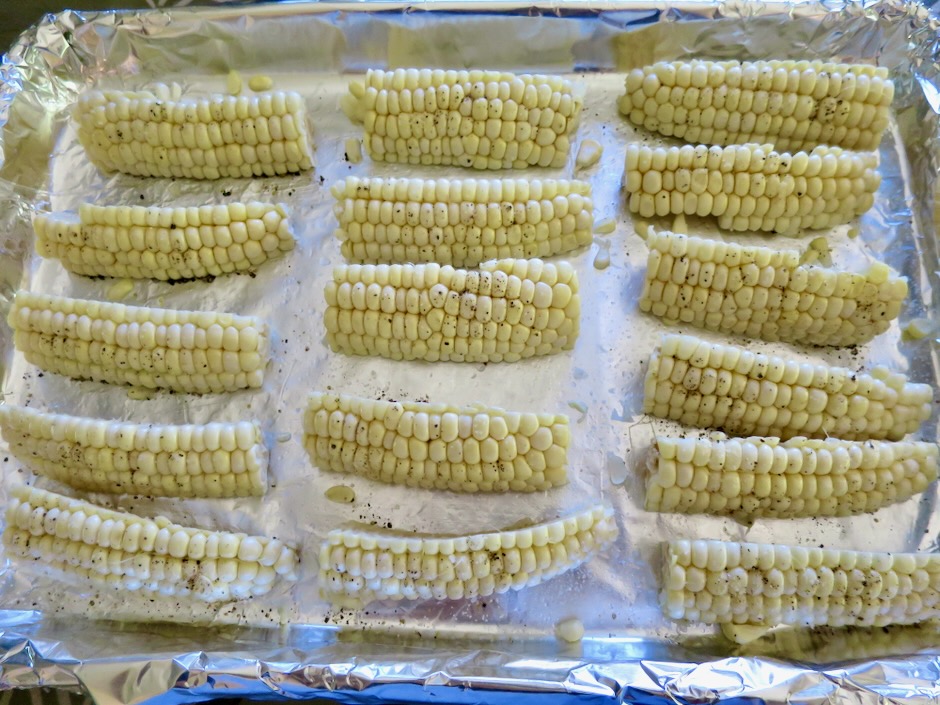
The corn is seasoned with a little oil, salt and pepper. It roasts at 450 degrees for 10 minutes before being turned.
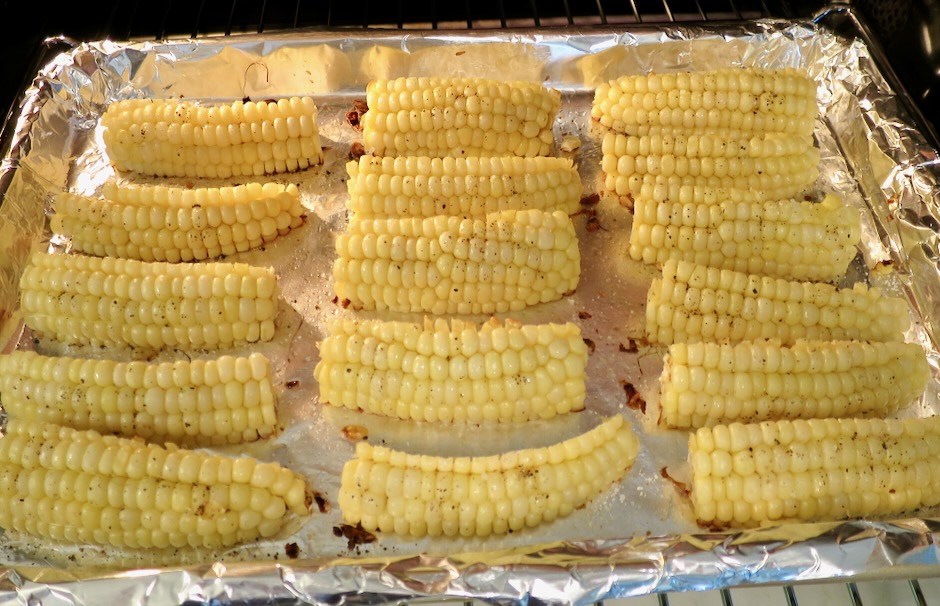
The corn already looks delicious after being in the oven for a short time.
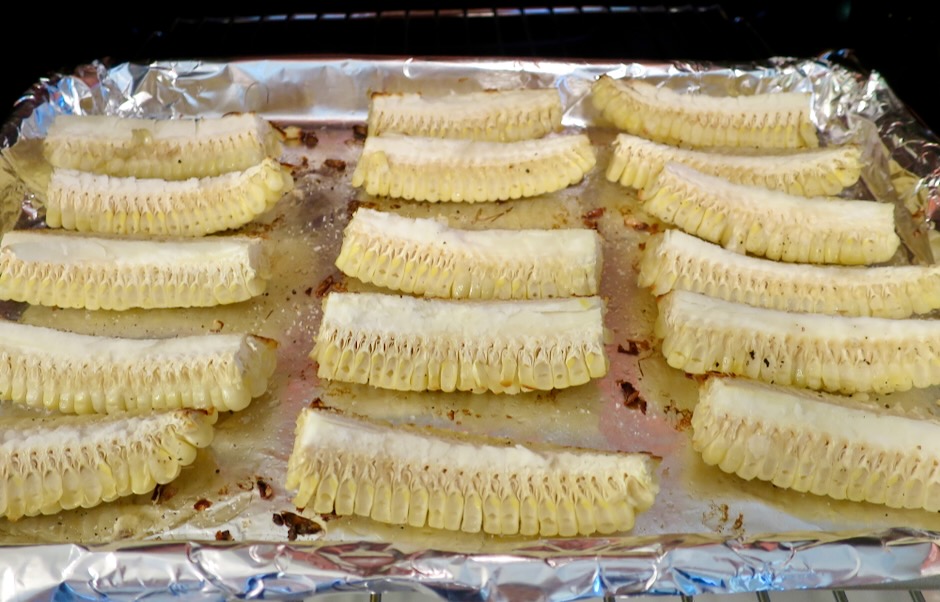
After roasting for 10 minutes, the corn wedges are turned cob side up and roasted for another 10 minutes.
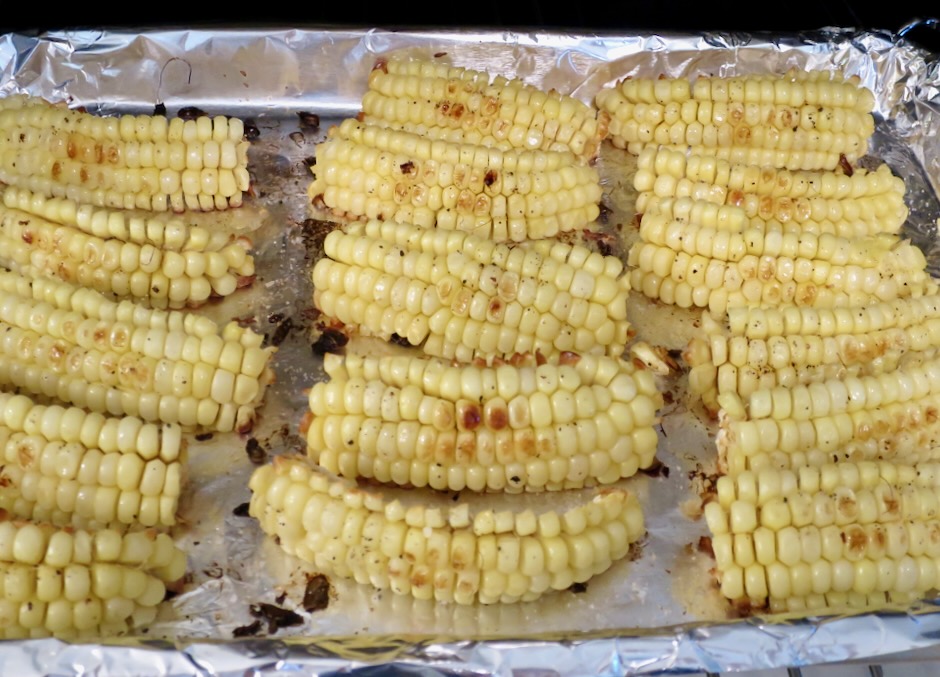
The corn riblets have been in the oven for 20 minutes and have taken on a nice color and smell divine. At this point they are cooked and ready to eat. But broiling the riblets for a minute or two will encourage lots of smoky flavor and a bit of charring around the edges which is always a good thing.
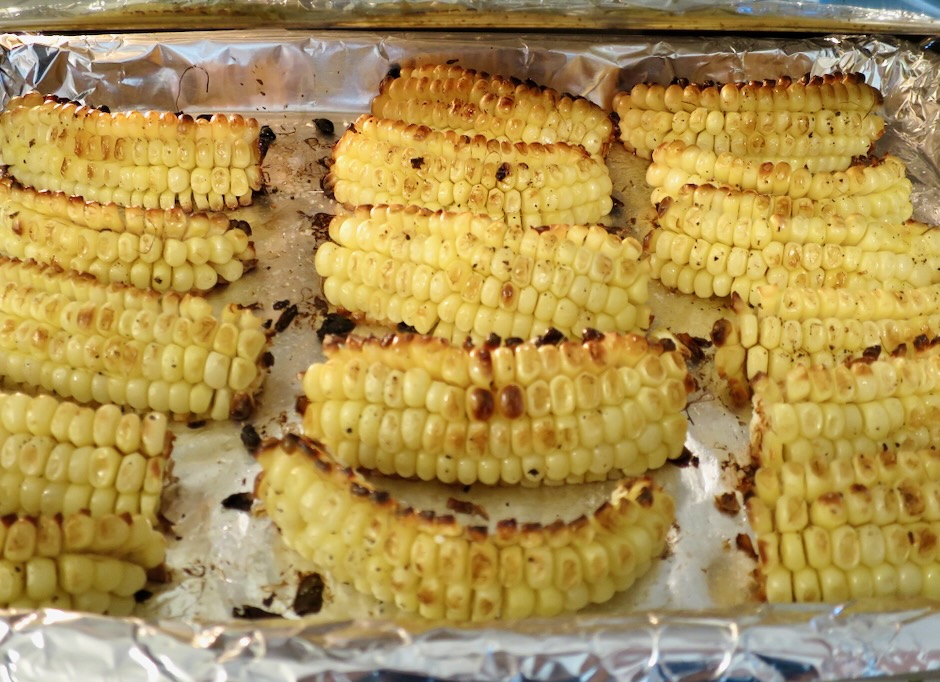
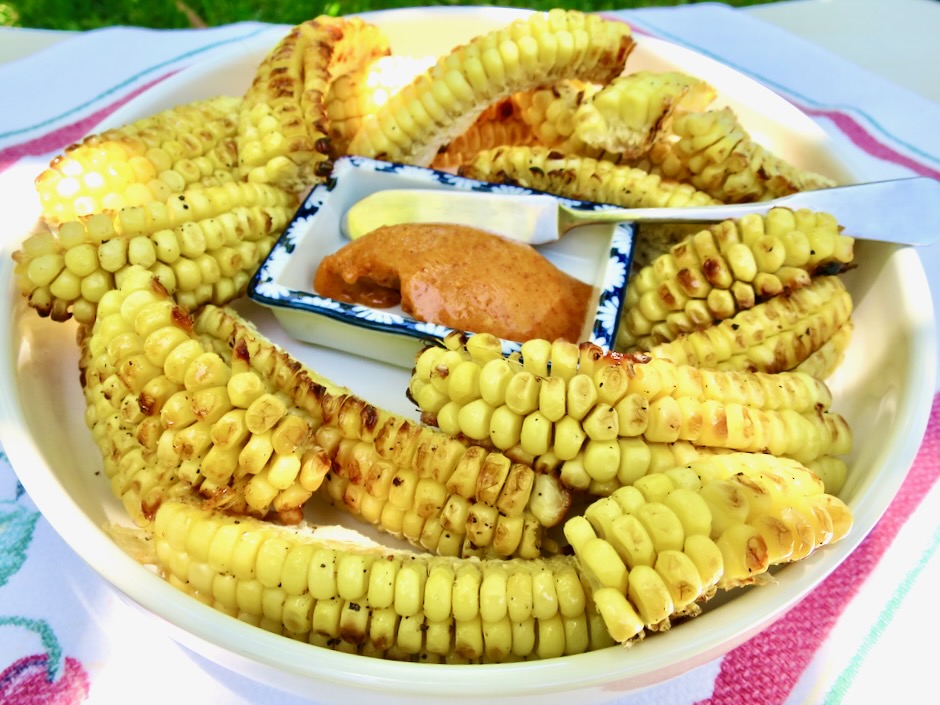
Corn riblets are best served soon after they emerge from the oven while still warm. Slather with smoky sweet butter and start nibbling on those delectable corn riblets. There’s no better way that I can think of, to prepare fresh corn.
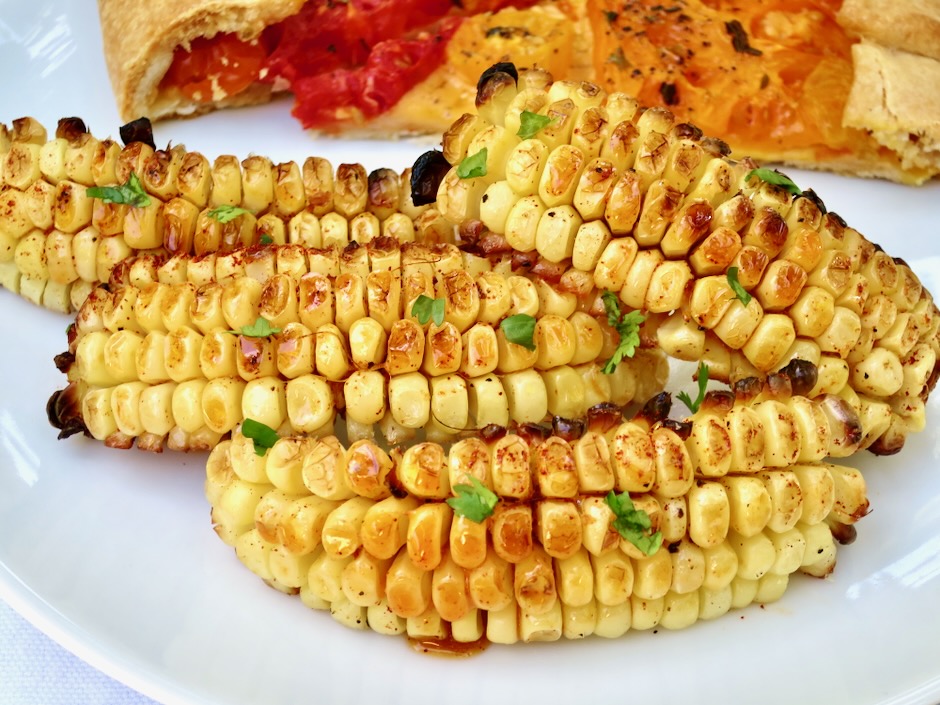
Smoky Sweet Corn Riblets
4
servingsRecipe adapted from Bon Appetit magazine.
Ingredients
- For the corn
4 ears of corn, husked and silk removed
3 tablespoons vegetable oil
3/4 teaspoon Diamond Crystal of 1/2 teaspoon Morton kosher salt
Freshly ground pepper
- Smoky Sweet Butter
1 stick (1/2 cup) Earth Balance Buttery Sticks (for lactose free version) or unsalted butter, room temperature
1 tablespoon light brown sugar
1 teaspoon apple cider vinegar
1 teaspoon smoked paprika
1/2 teaspoon garlic powder
few dashes of cayenne (more for spicier flavor)
3/4 teaspoon Diamond Crystal or 1/2 teaspoon Morton kosher salt if using unsalted butter
Directions
- Preheat oven to 450 degrees. Line a baking pan with foil.
- Using a chef’s knife or Nakiri knife and securing your cutting board by placing a damp kitchen towel underneath, cut the top of the cob and bottom stem so the ends of the corn are flat. Cut each ear of corn in half crosswise. Working one at a time, stand each piece up on a cut end and slice lengthwise in half. Lay each half cob side down on cutting board and using a chef’s knife, Nakiri knife, or mezzaluna cut each in half again. You should have 8 wedges per ear. Continue with the remaining 3 ears of corn. Drizzle wedges with 3 tablespoons of vegetable oil, season with kosher salt and pepper, toss to coat. Spread out wedges evenly arranging kernel side up.
- While oven is preheating, mix together the Buttery Sticks or unsalted butter, brown sugar, apple cider vinegar, smoked paprika, and garlic powder. If using unsalted butter mix in 3/4 teaspoon Diamond Crystal or 1/2 teaspoon Morton kosher salt.
- Roast corn for 10 minutes then turn corn over cob side up. Continue to roast for 10 more minutes. Remove pan from oven and turn corn kernel sides up. Broil corn on upper rack for about 1 minute, or until the corn takes on more color. Watch closely so the corn doesn’t burn.
- Transfer corn riblets to a platter and serve with seasoned butter.

